FAQ - Advanced Bathroom Queries
Can You Adjust the Flush on a Toilet

Ever pondered whether it’s possible to tweak your toilet’s flush settings? The response is affirmative! This article guides you through the process of fine-tuning the flushing system to achieve peak efficiency.
Whether you need to increase or decrease the flush power, replace the flapper, or troubleshoot common issues, we’ve got you covered.
By mastering the art of adjusting the flush, you can ensure a smooth and reliable operation of your toilet.
Let’s dive in!
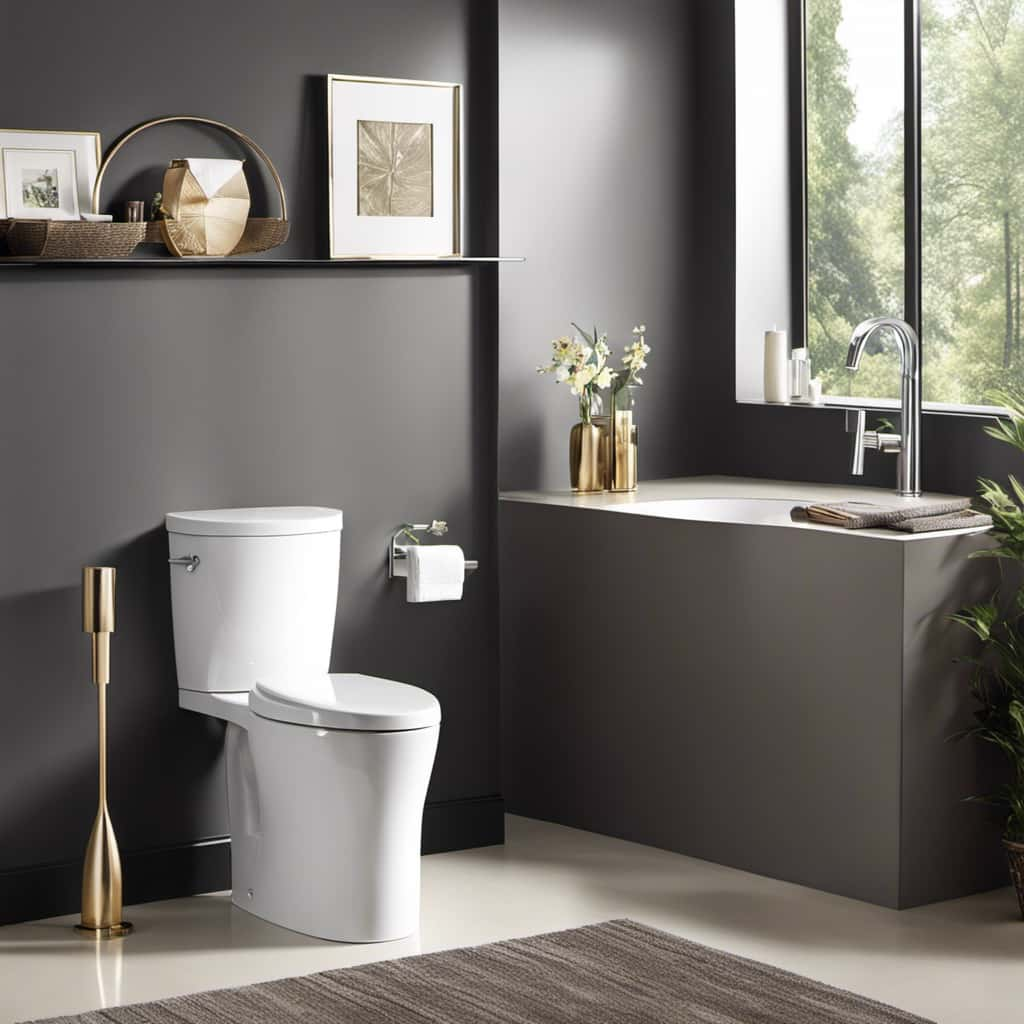
Key Takeaways
- The flush mechanism of a toilet can be adjusted to increase or decrease the flush power.
- Increasing water pressure and adjusting the float valve can increase flush power.
- Decreasing water pressure and using eco-friendly options can decrease flush power.
- Adjusting the water level in the tank can optimize the flush and prevent water waste.
Understanding the Toilet Flush Mechanism
To understand the toilet flush mechanism, we need to know how the main components work together.
When troubleshooting issues with a toilet flush, it’s crucial to have a deep understanding of the various parts that make up the mechanism.
The key components of a toilet flush mechanism include the flush valve, fill valve, flapper, overflow tube, and handle.
The flush valve is responsible for releasing a large amount of water into the bowl, creating a powerful flush.
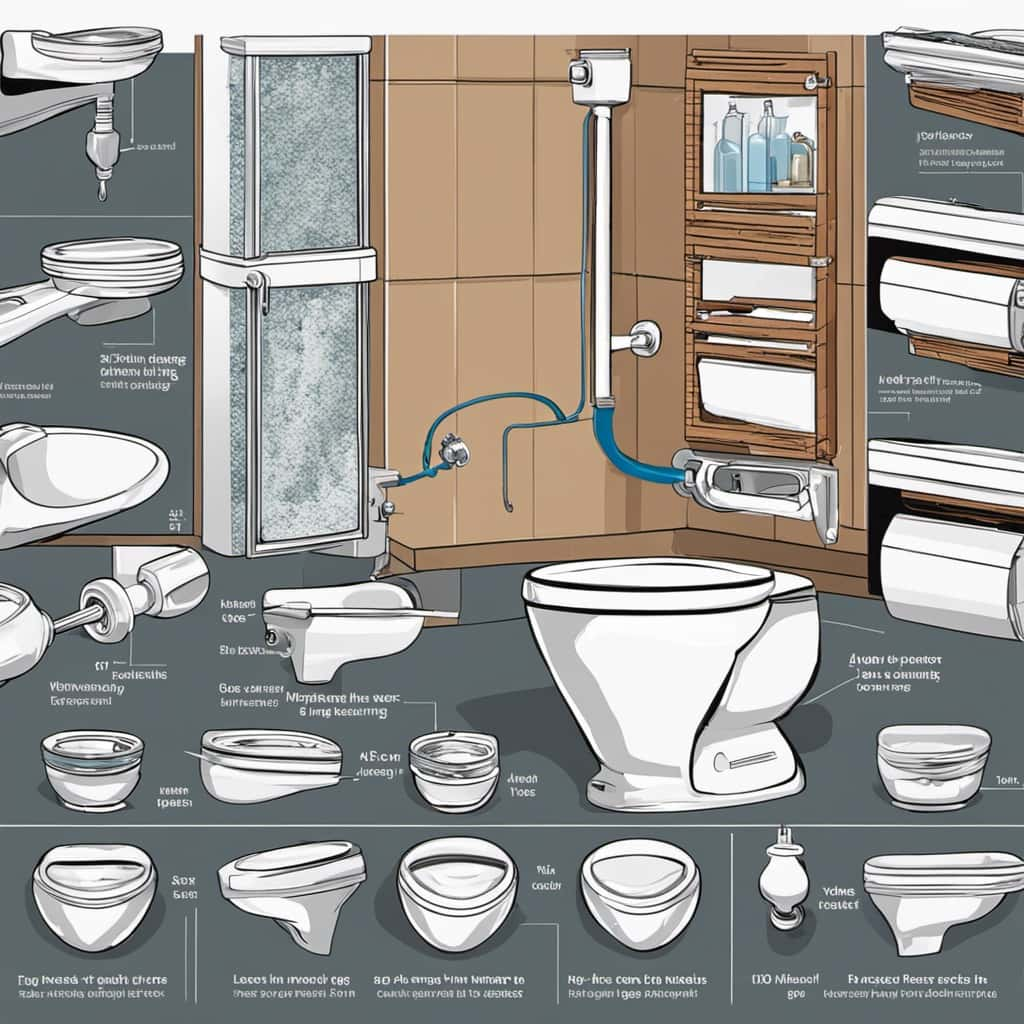
The fill valve controls the water level in the tank and refills it after each flush.
The flapper is a rubber seal that opens and closes the flush valve.
The overflow tube prevents water from overflowing the tank.
Lastly, the handle activates the flush mechanism.
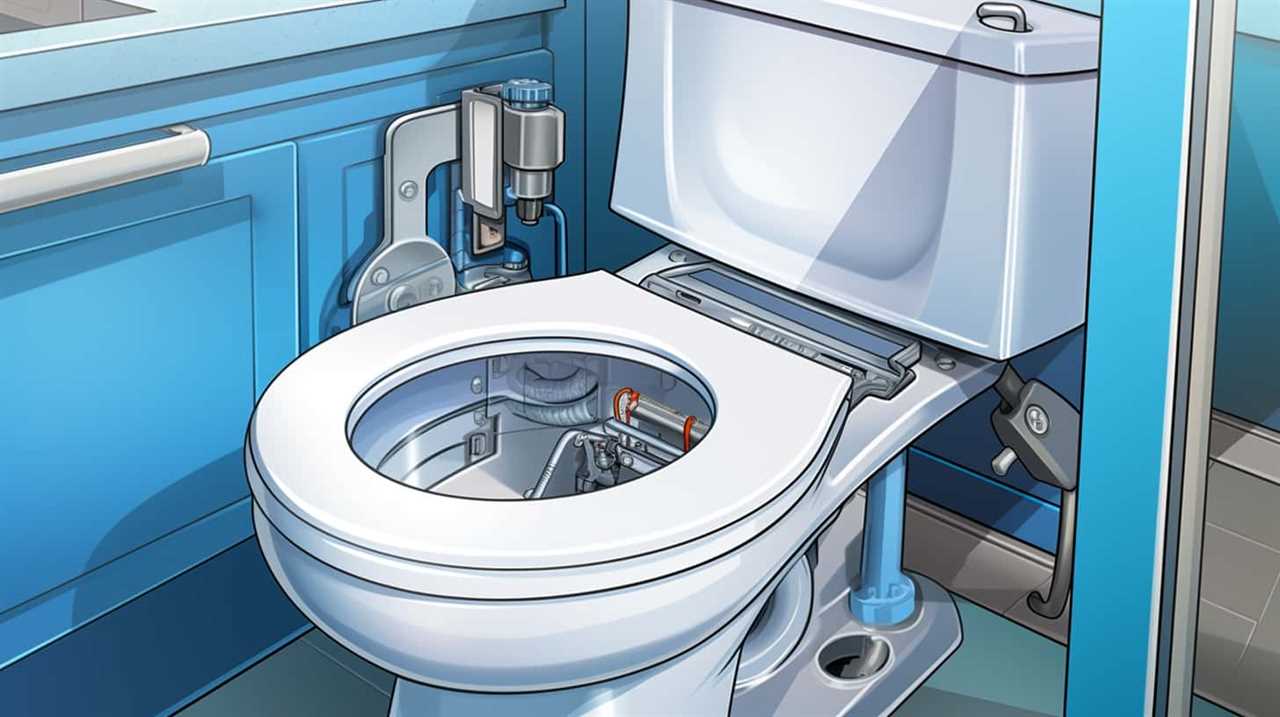
Identifying Different Flush Types
We can identify different flush types by examining the amount of water they release into the toilet bowl. Understanding the different types of flushes can help in troubleshooting common issues and ensuring optimal performance of the toilet. Here is a table outlining the most common toilet flush types:
| Flush Type | Water Consumption (Gallons per Flush) |
|---|---|
| Single Flush | 1.6 to 3.5 |
| Dual Flush | 0.8 to 1.6 (for liquid waste) |
| 1.6 to 3.5 (for solid waste) | |
| Pressure Assist | 1.6 to 3.5 |
| Gravity Flush | 1.6 to 3.5 |
Each flush type has its own advantages and disadvantages. Single flush toilets are the most common and use the same amount of water for all waste types. Dual flush toilets offer separate buttons for liquid and solid waste, reducing water consumption. Pressure assist toilets use compressed air to create a forceful flush, while gravity flush toilets rely on water weight to clear waste. By understanding these flush types, you can troubleshoot common issues and select the best option for your needs.
Assessing the Flush Power of Your Toilet
Assessing the flush power of our toilet involves determining the strength of the water flow during a flush. To assess the flush power and potentially increase it, we can start by checking the water pressure in our home.
Increasing water pressure can result in a stronger flush. We can contact our water supplier to find out the recommended range of water pressure for our area and adjust it accordingly.
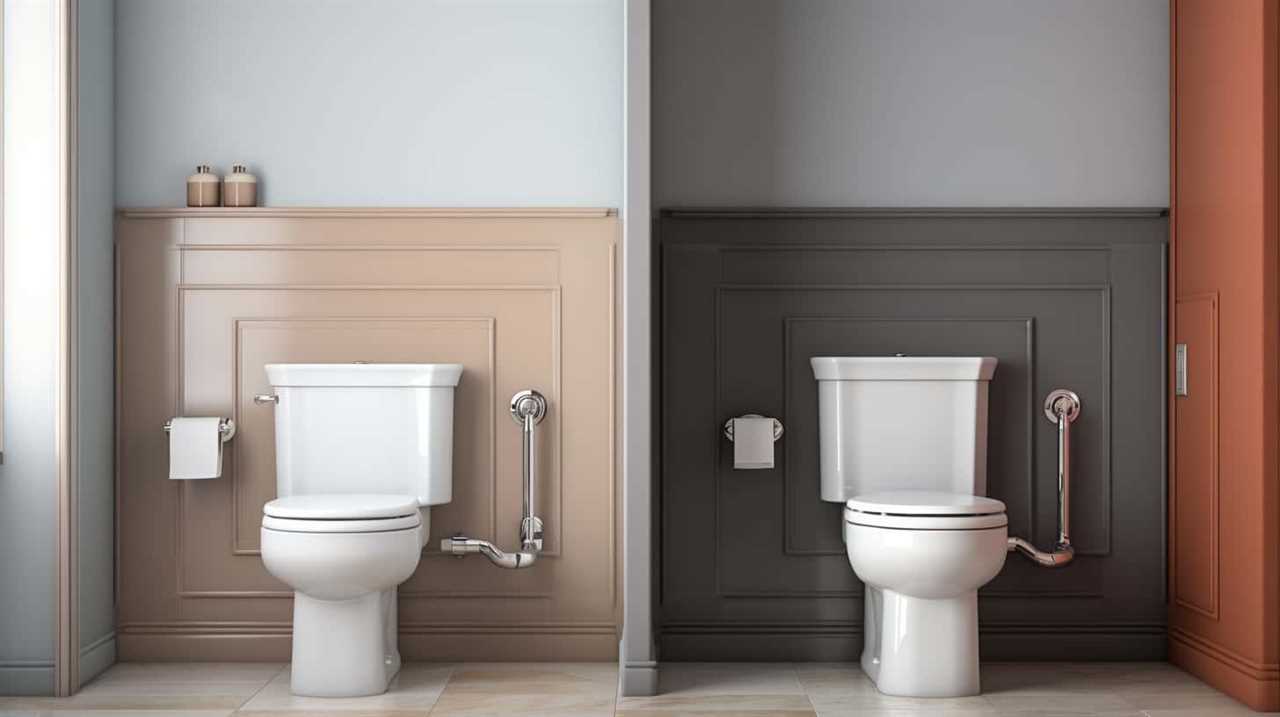
Additionally, we can check the flush handle to ensure it’s properly adjusted. Sometimes, a loose or misaligned flush handle can affect the flush power. By tightening or adjusting the flush handle, we can optimize the flushing mechanism and improve the overall flush power of our toilet.
Increasing the Flush Power
One way to increase the flush power of our toilet is by adjusting the water pressure. Increasing water pressure can help improve the efficiency and effectiveness of the flush. To adjust the water pressure, locate the shut-off valve near the toilet’s water supply line and turn it clockwise to increase the pressure. Be cautious not to increase the pressure too much, as it can cause damage to the plumbing system.
Another way to enhance the flush power is by adjusting the float valve. The float valve controls the water level in the toilet tank, and adjusting it can affect the amount of water used during each flush. By lowering the float valve, more water will enter the tank, resulting in increased flush power.
Decreasing the Flush Power
To decrease the flush power of a toilet, we can adjust the water pressure and reduce the amount of water used during each flush. By adjusting the water pressure, we can decrease the force with which the water is expelled from the tank, resulting in a gentler flush. This can be done by adjusting the fill valve or the pressure regulator, if your toilet has one.
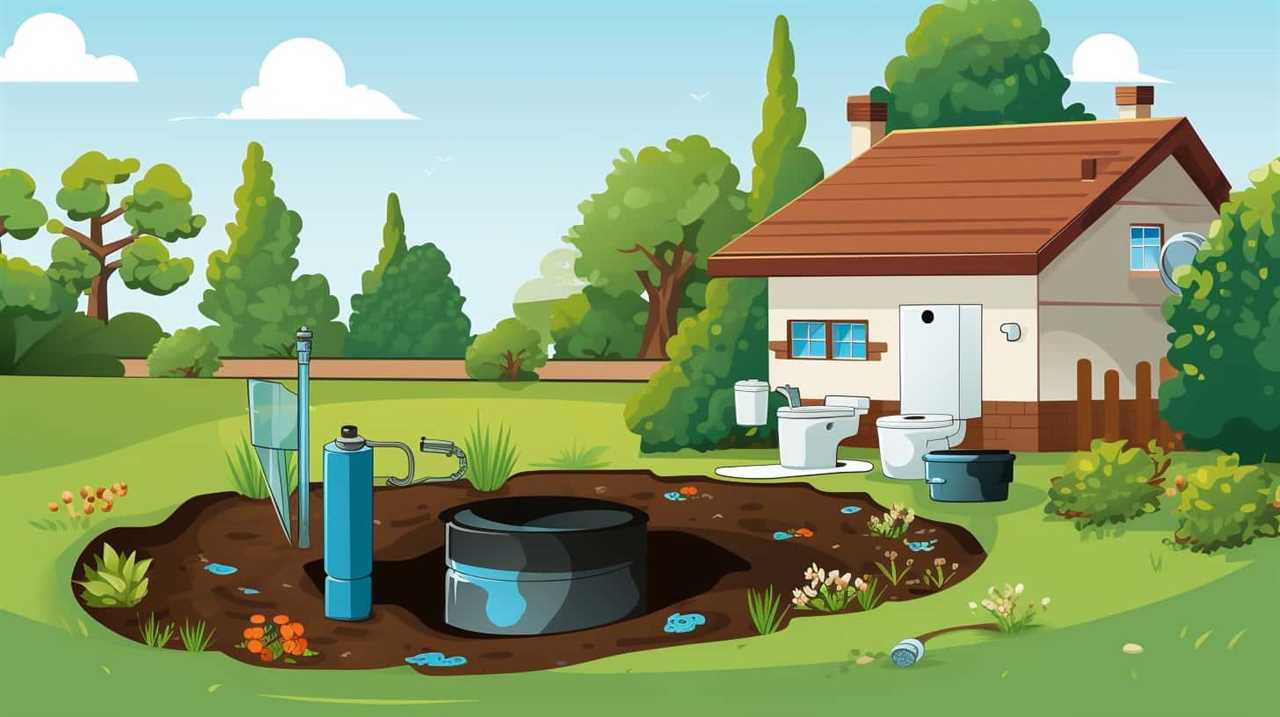
Additionally, reducing the amount of water used during each flush can help decrease water consumption and make the flush more eco-friendly. One option is to install a dual-flush system, which allows you to choose between a full flush and a partial flush, depending on the waste being flushed. Another option is to install a low-flow toilet that’s specifically designed to use less water per flush.
These eco-friendly flush options can help decrease water consumption while still maintaining the functionality of the toilet.
Adjusting the Water Level in the Tank
When it comes to adjusting the water level in the tank of a toilet, there are a few key points to consider.
Firstly, finding the optimal water level is crucial for efficient flushing.

Secondly, adjusting the water level can have an impact on the flushing power of the toilet.
Therefore, understanding these points will help ensure that your toilet operates at its best performance.
Optimal Water Level
We frequently adjust the water level in the tank to ensure optimal flushing performance. The water level adjustment plays a crucial role in maintaining the appropriate toilet water pressure, which directly impacts the flushing power.
Achieving the optimal water level is essential for a toilet to function effectively and efficiently. When the water level is too low, there may not be enough pressure to clear waste effectively, resulting in incomplete flushing. Conversely, if the water level is too high, it can lead to excessive water usage and a less efficient flush. Finding the right balance is important for achieving the desired flushing power.
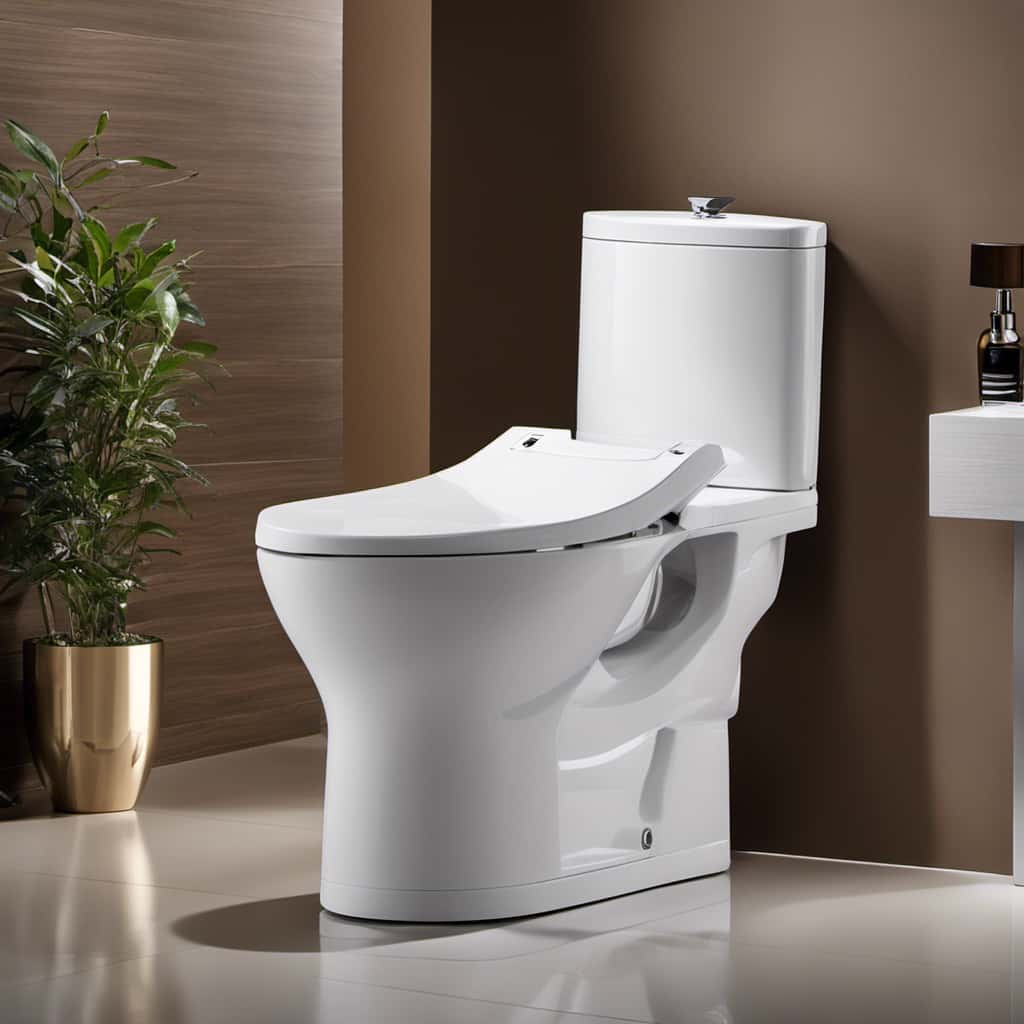
Now, let’s explore how flushing power impacts the overall performance of a toilet.
Flushing Power Impact?
Achieving the optimal water level in the toilet tank significantly affects the flushing power and overall performance.
By adjusting the water level, you can increase flushing efficiency and improve the impact of water pressure on flushing power.
When the water level is too low, there may not be enough force to effectively clear the bowl.

On the other hand, if the water level is too high, it can cause excessive splashing and waste water.
To find the right balance, you can adjust the float valve or fill valve in the tank.
The float valve controls the water level and should be set to allow enough water to fill the tank without overflowing.
Improving Water Efficiency
When it comes to improving water efficiency in toilets, there are a few options to consider.
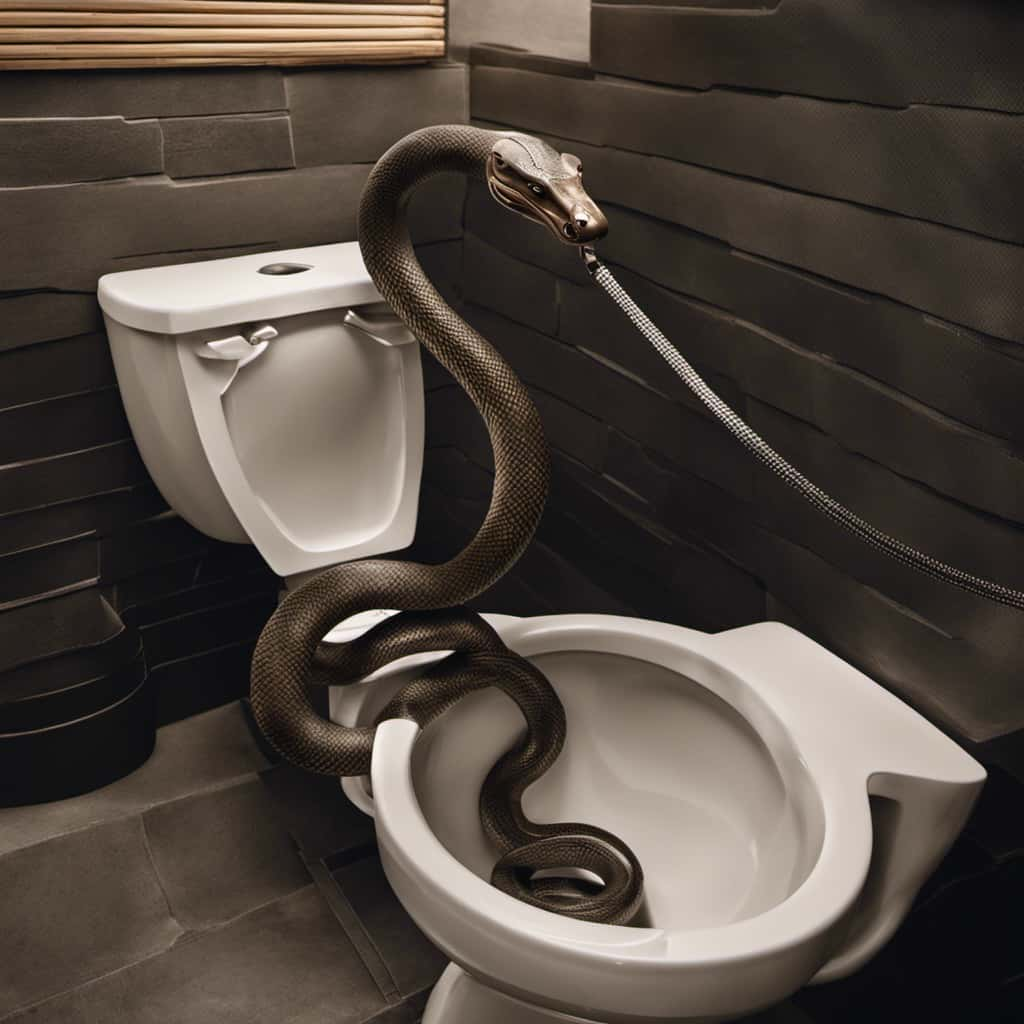
One option is to invest in water-saving toilets that are designed to use less water per flush.
Another option is to make DIY flush adjustments, such as reducing the amount of water that fills the tank or installing a dual-flush mechanism.
These simple changes can help conserve water and make your toilet more efficient.
Water-Saving Toilet Options
To improve water efficiency, one option is to explore water-saving toilet options. Water-saving toilets are designed to use less water per flush, helping to conserve water and reduce water bills. These toilets are equipped with various features that contribute to their water-saving benefits.

One of the main benefits of water-saving toilets is their ability to significantly reduce water consumption. Traditional toilets typically use around 3 to 5 gallons of water per flush, while water-saving toilets use around 1.6 gallons or less. This can result in substantial water savings over time.
When it comes to installation, there are a few tips to keep in mind. First, it’s important to choose a toilet that’s labeled as water-efficient or WaterSense certified. These labels indicate that the toilet meets specific water-saving criteria. Additionally, consider opting for a dual-flush toilet, which allows users to choose between a full flush for solid waste and a reduced flush for liquid waste.
By exploring water-saving toilet options and following installation tips, you can contribute to water conservation efforts and enjoy the benefits of reduced water consumption.
In the next section, we’ll discuss how to make DIY flush adjustments to further enhance water efficiency.
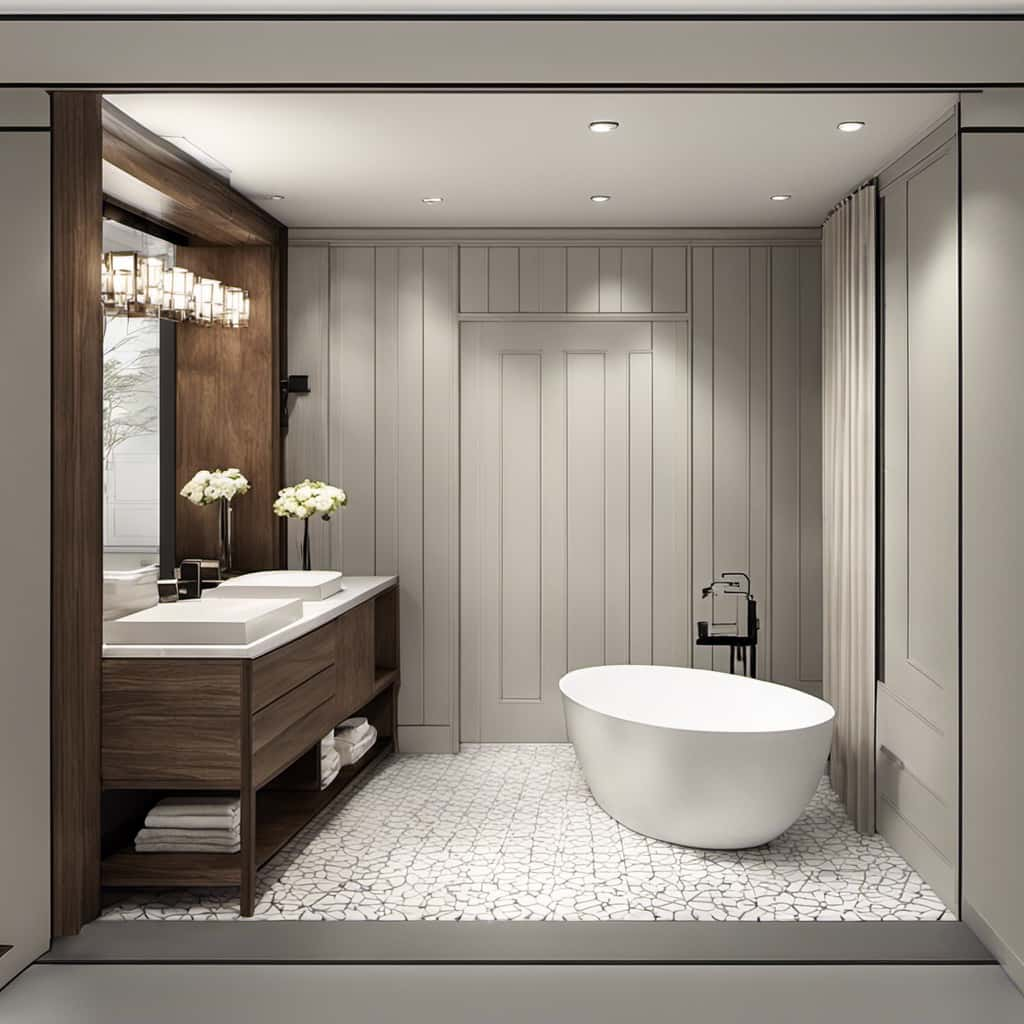
DIY Flush Adjustments
Continuing our exploration of water-saving toilet options, let’s delve into the topic of improving water efficiency through DIY flush adjustments.
When it comes to troubleshooting common toilet problems and maximizing water usage, there are several simple adjustments you can make on your own. Here are three DIY flush adjustments to consider:
- Adjust the water level in the tank: By lowering the water level, you can reduce the amount of water used in each flush.
- Check and adjust the float: Ensure that the float isn’t set too high, as this can lead to excessive water usage. Adjust it to the recommended level.
- Clean or replace the fill valve: Over time, sediment and mineral build-up can affect the fill valve’s performance. Cleaning or replacing it can improve water flow and efficiency.
By implementing these DIY flush adjustments, you can enhance water efficiency and address common toilet problems.
Now, let’s move on to the next section where we’ll discuss replacing or adjusting the flapper.

Replacing or Adjusting the Flapper
We can easily replace or adjust the flapper in a toilet to improve its flushing performance. The flapper is a crucial component that controls the release of water from the tank into the bowl during a flush.
Over time, the flapper can become worn out or misaligned, resulting in inefficient flushing or water leakage. To replace the flapper, first, turn off the water supply to the toilet and flush to empty the tank. Then, disconnect the chain or strap connecting the flapper to the flush valve.
Remove the old flapper and attach the new one, ensuring a secure fit. For adjusting the flapper, you can try adjusting the chain or strap length to achieve the desired flush volume. Regularly inspecting and maintaining the flapper can ensure optimal toilet performance and water efficiency.
Cleaning and Maintaining the Flush System
Let’s now turn our attention to cleaning and maintaining the flush system of a toilet. Two important aspects of this are water level adjustment and flapper valve maintenance.
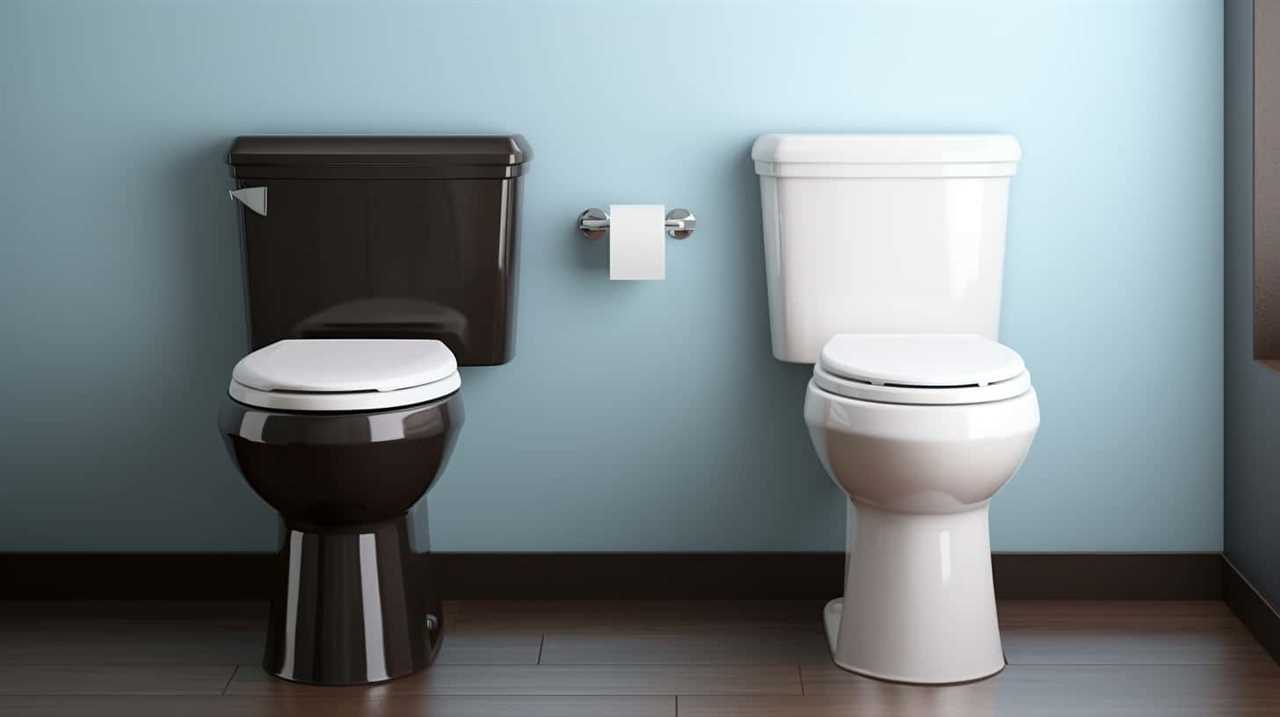
By adjusting the water level, we can ensure optimal flushing performance and prevent water waste.
Regularly cleaning and maintaining the flapper valve will help prevent leaks and ensure a proper seal for efficient flushing.
Water Level Adjustment
To adjust the water level in the toilet flush system, simply locate the fill valve and turn the adjustment screw clockwise to decrease the water level or counterclockwise to increase it. This adjustment is important for maintaining proper flushing and preventing issues such as a running toilet.
Here are some key steps to follow when adjusting the water level:

- Start by turning off the water supply to the toilet.
- Remove the tank lid and locate the fill valve, usually on the left side of the tank.
- Use a screwdriver to turn the adjustment screw in the desired direction.
- Test the flush by flushing the toilet and observing the water level.
- Make additional adjustments if necessary until the desired water level is achieved.
Flapper Valve Maintenance
To maintain the flush system and ensure its proper functioning, it’s important to regularly clean and maintain the flapper valve.
The flapper valve is a crucial component of the toilet’s flush system, responsible for regulating the flow of water from the tank into the bowl during flushing.
Over time, the flapper valve can become dirty or worn out, leading to various issues such as inconsistent flushing or water leakage.
To address these problems, troubleshooting flapper issues is essential. Start by inspecting the flapper for any signs of damage or buildup.
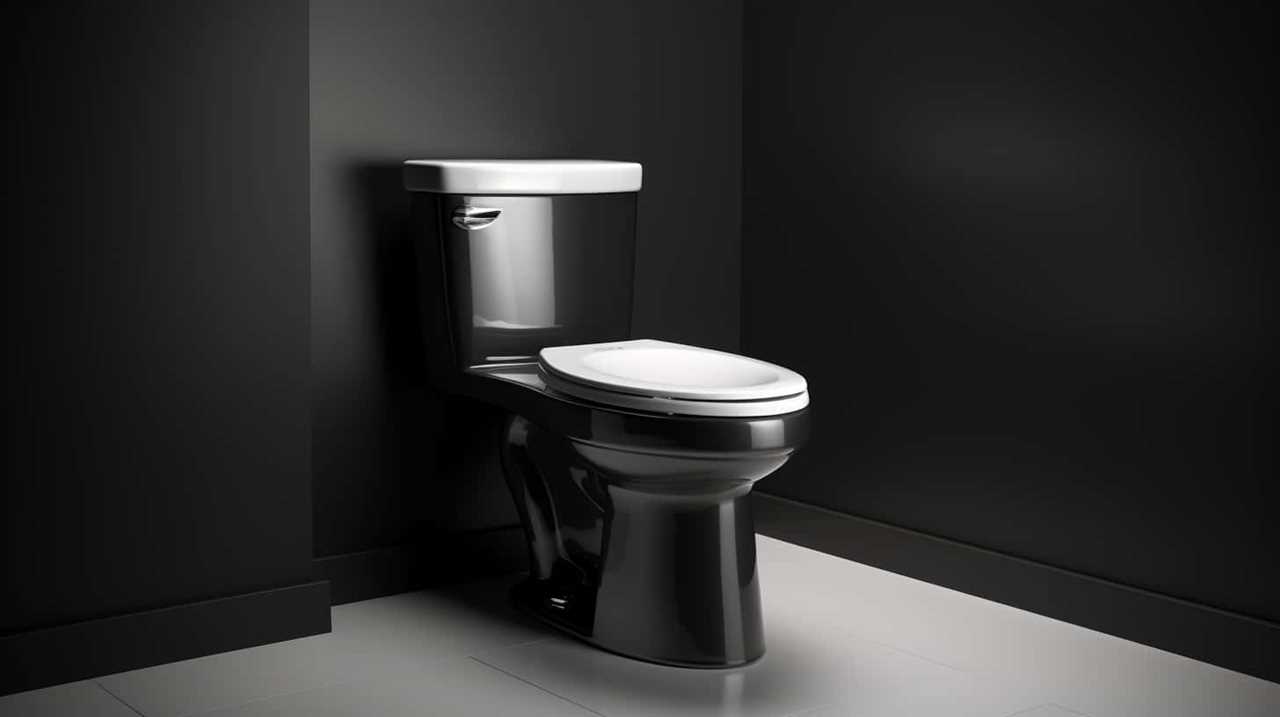
If cleaning the flapper doesn’t resolve the issue, flapper valve replacement may be necessary.
Troubleshooting Common Flush Issues
When experiencing common flush issues, we can troubleshoot and resolve them by adjusting various components of the toilet. Here are some steps to troubleshoot weak flush and fix a partial flush:
- Check the water level in the tank. Adjust the float mechanism to ensure the water level is at the appropriate level.
- Inspect the flapper valve. Clean or replace it if it’s damaged or not sealing properly.
- Examine the flush valve. Make sure it opens fully and closes tightly.
By following these troubleshooting steps, we can often fix weak or partial flushes without the need for professional help.
However, if the problem persists or if there are other issues with the toilet, it may be necessary to seek professional assistance.
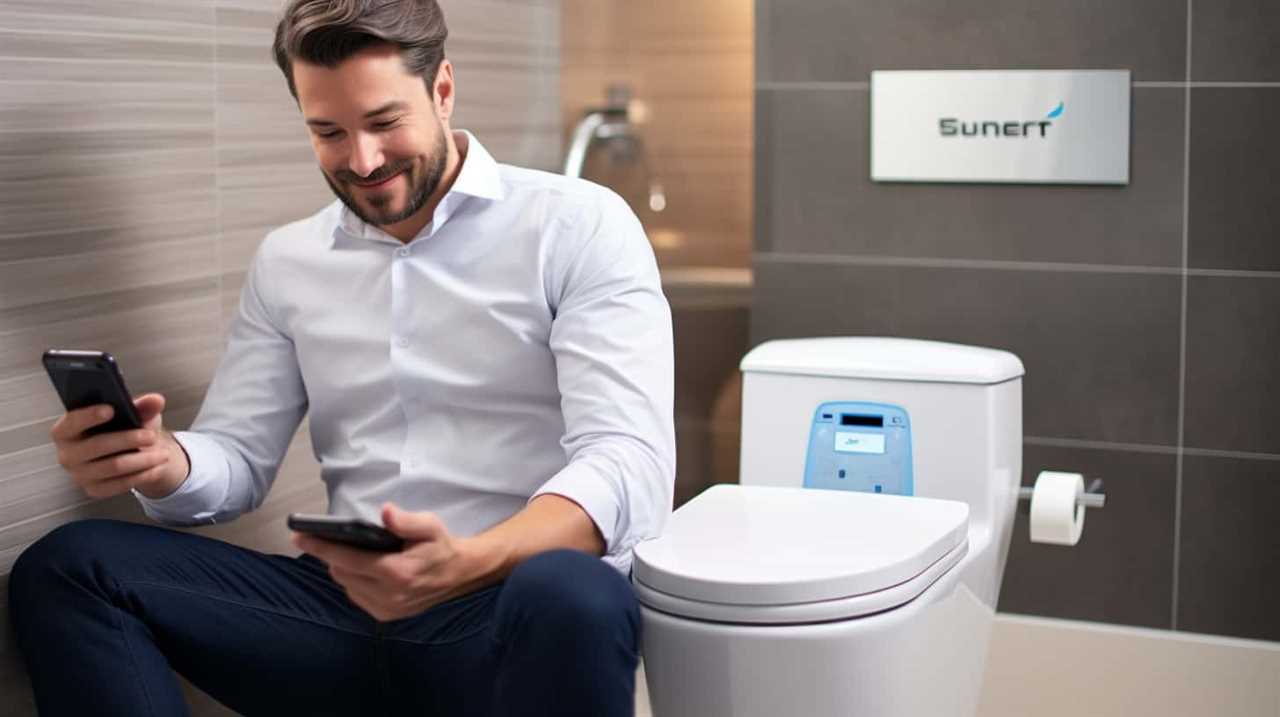
Additionally, there are various online resources and tutorials available that provide detailed instructions on troubleshooting toilet flush issues and maintaining optimal toilet performance.
Professional Help and Additional Resources
We recommend seeking professional assistance and utilizing additional resources to resolve any persistent or complex toilet flush issues.
While troubleshooting tips can be helpful for minor adjustments, more complicated problems may require the expertise of a professional plumber. Professional guidance can ensure that the root cause of the issue is accurately diagnosed and effectively resolved. Plumbers have the necessary knowledge and experience to identify any underlying problems with the toilet’s flushing mechanism and can provide appropriate solutions.
Additionally, utilizing additional resources such as online tutorials, instructional videos, and user manuals can also be beneficial in understanding the intricacies of toilet flushing systems. These resources can provide step-by-step instructions and troubleshooting techniques, allowing individuals to tackle simple problems on their own.

However, for more complex issues, it’s always best to seek professional help to avoid further damage or complications.
Conclusion
So there you have it, folks! We’ve learned all about adjusting the flush on a toilet.
From understanding the mechanism to troubleshooting common issues, now you can become a true toilet flush expert.
Ready to conquer any flush power challenge that comes your way.
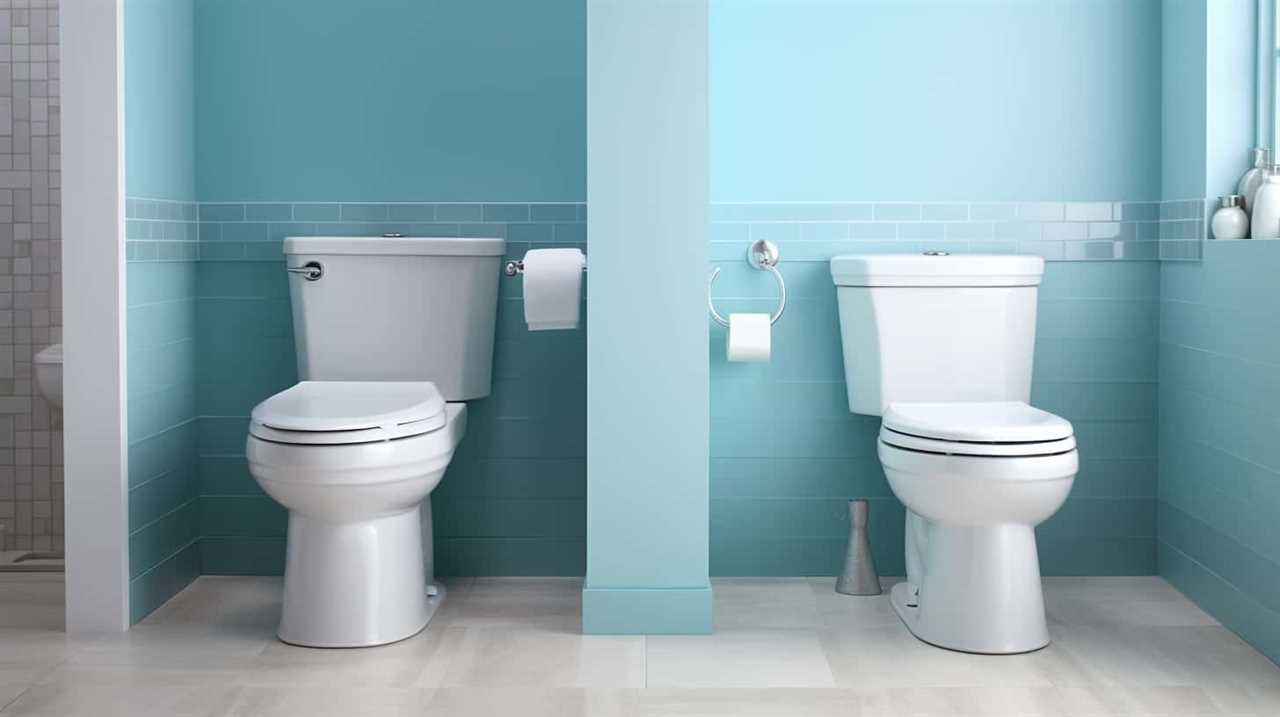
Remember, with a little know-how and a touch of humor, you can make your toilet flush like a champ.
Happy flushing!
With an impeccable eye for detail and a passion for bathroom-related, Ava leads our editorial team gracefully and precisely.
Under her guidance, Best Modern Toilet has flourished as the go-to resource for modern bathroom enthusiasts. In her free time, you might find Ava exploring antique shops and looking for vintage bathroom fixtures to add to her collection.
FAQ - Advanced Bathroom Queries
Can I Flush Bed Bugs Down the Toilet

Can you flush bed bugs down the toilet?
Well, let’s dive into the world of bed bugs and explore this myth together.
In this article, we will unravel the behavior of these pesky critters and discuss the potential risks and limitations of flushing as a solution.
Fear not, for we will also explore alternative methods for eliminating bed bugs.
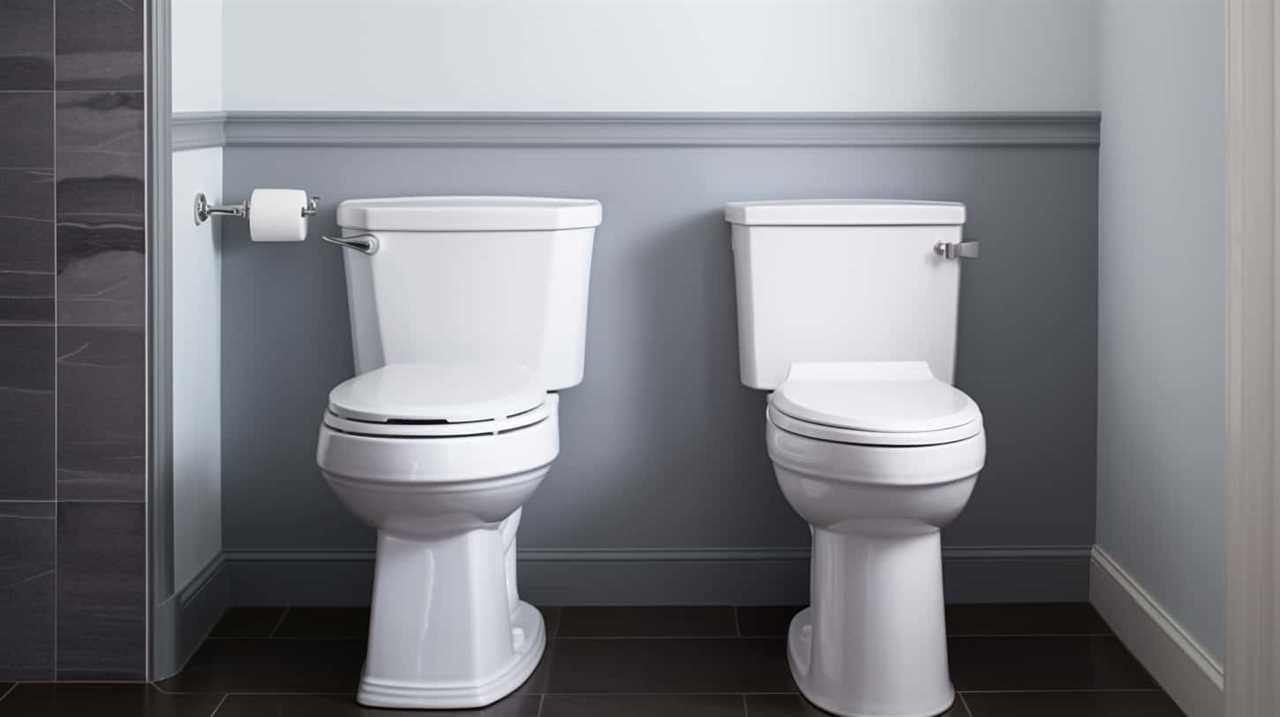
Get ready to master the art of dealing with these unwelcome guests!
Key Takeaways
- Flushing bed bugs down the toilet is ineffective for eradication.
- Bed bugs can survive in water and can swim short distances.
- Flushing may cause bed bugs to scatter and infest other areas of the home.
- Prevention and detection methods, such as regular inspection and the use of mattress encasements and insecticides, are more reliable strategies.
The Myth of Flushing Bed Bugs
One common misconception that we need to address is the myth that we can flush bed bugs down the toilet. While it may seem like a convenient solution, it’s important to understand that flushing bed bugs down the toilet isn’t an effective method of eradication.
Bed bugs have a remarkable ability to survive in various environments, including water. They can withstand submersion and can even swim for short distances. Flushing them down the toilet won’t eliminate an infestation nor prevent future occurrences.
To effectively control bed bug infestations, it’s crucial to focus on prevention and detection methods. Regular inspection of bedding, furniture, and cracks in walls, as well as the use of mattress encasements and insecticides, are more reliable strategies to combat these pests.

Understanding the Behavior of Bed Bugs
To truly understand the behavior of bed bugs, we must delve into their habits and preferences. Bed bugs, scientifically known as Cimex lectularius, are nocturnal insects that feed on the blood of humans and animals. They’re excellent at hiding and can be found in various places within our homes. Understanding their hiding spots is key to effective prevention and control of infestations.
Bed bugs are skilled at hiding in dark, secluded areas near their hosts. They’re commonly found in mattresses, box springs, bed frames, and headboards. These areas provide easy access to their food source during the night. However, they can also hide in other places such as cracks and crevices in walls, furniture, and electrical outlets.
By knowing their preferred hiding spots, we can take proactive measures to prevent bed bug infestations. Regularly inspecting these areas and implementing preventive measures, such as using mattress covers and keeping a clutter-free environment, can help reduce the risk of infestation.
Understanding the behavior and hiding spots of bed bugs is crucial for effective prevention and control. However, it’s also important to be aware of the potential risks associated with flushing bed bugs, which we’ll discuss in the next section.
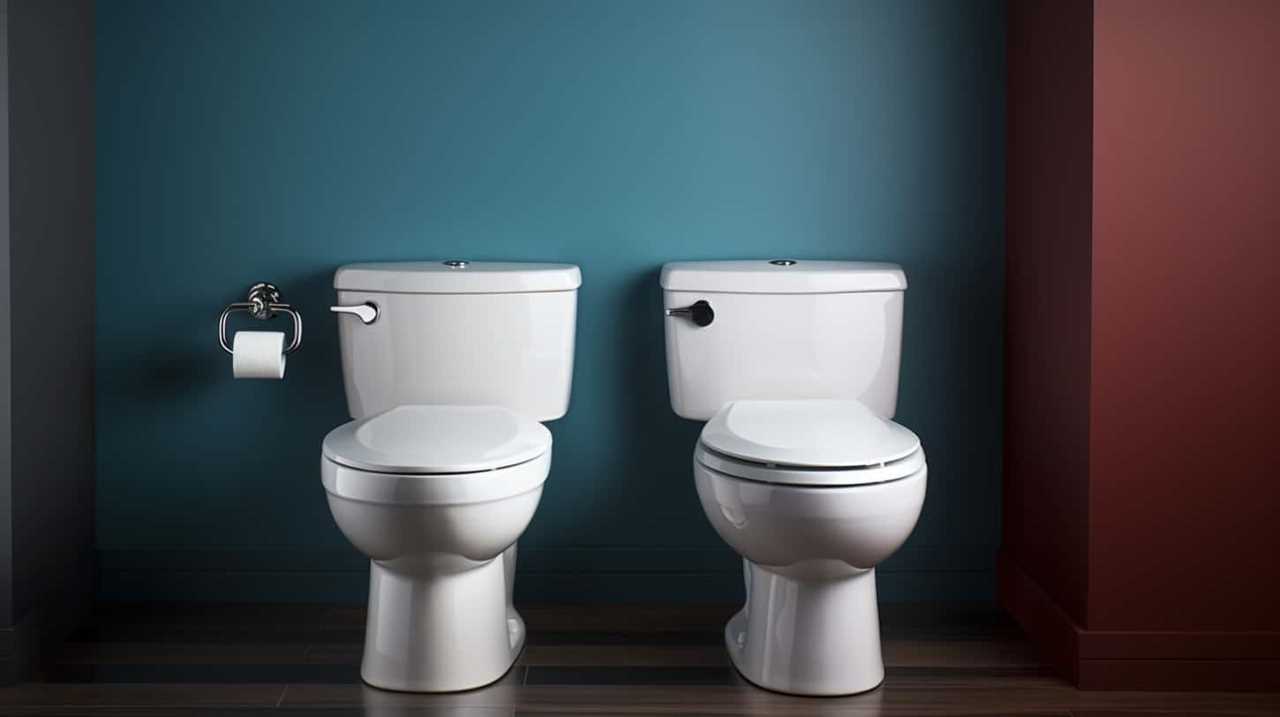
Potential Risks of Flushing Bed Bugs
Now let’s delve into the potential risks of flushing bed bugs down the toilet. While flushing may seem like an easy and convenient solution, it’s important to consider its effectiveness and potential drawbacks. Here are some potential risks to be aware of:
- Survival: Bed bugs are resilient creatures and can survive for extended periods of time without feeding. Flushing them down the toilet may not guarantee their complete elimination.
- Spread: Flushing bed bugs down the toilet can potentially cause them to scatter and infest other areas of your home or building.
- Water resistance: Bed bugs have the ability to cling onto surfaces, including the sides of the toilet bowl. They may be able to resist being flushed down and could crawl back up.
- Clogging: Flushing a large number of bed bugs at once may clog the toilet pipes, leading to plumbing issues.
- Environmental impact: Flushing bed bugs can introduce them into the water system, potentially affecting local ecosystems.
Considering these risks, it’s important to explore other bed bug solutions that may be more effective and less problematic.
Limitations of Flushing as a Bed Bug Solution
Using the toilet to flush bed bugs has several limitations that we need to consider. While it may seem like a convenient and straightforward solution, it’s important to understand the risks and effectiveness associated with this method.
One limitation is that flushing may not effectively eliminate all bed bugs present in your home. Bed bugs are known to hide in various cracks and crevices, making it difficult to completely eradicate them through flushing alone.
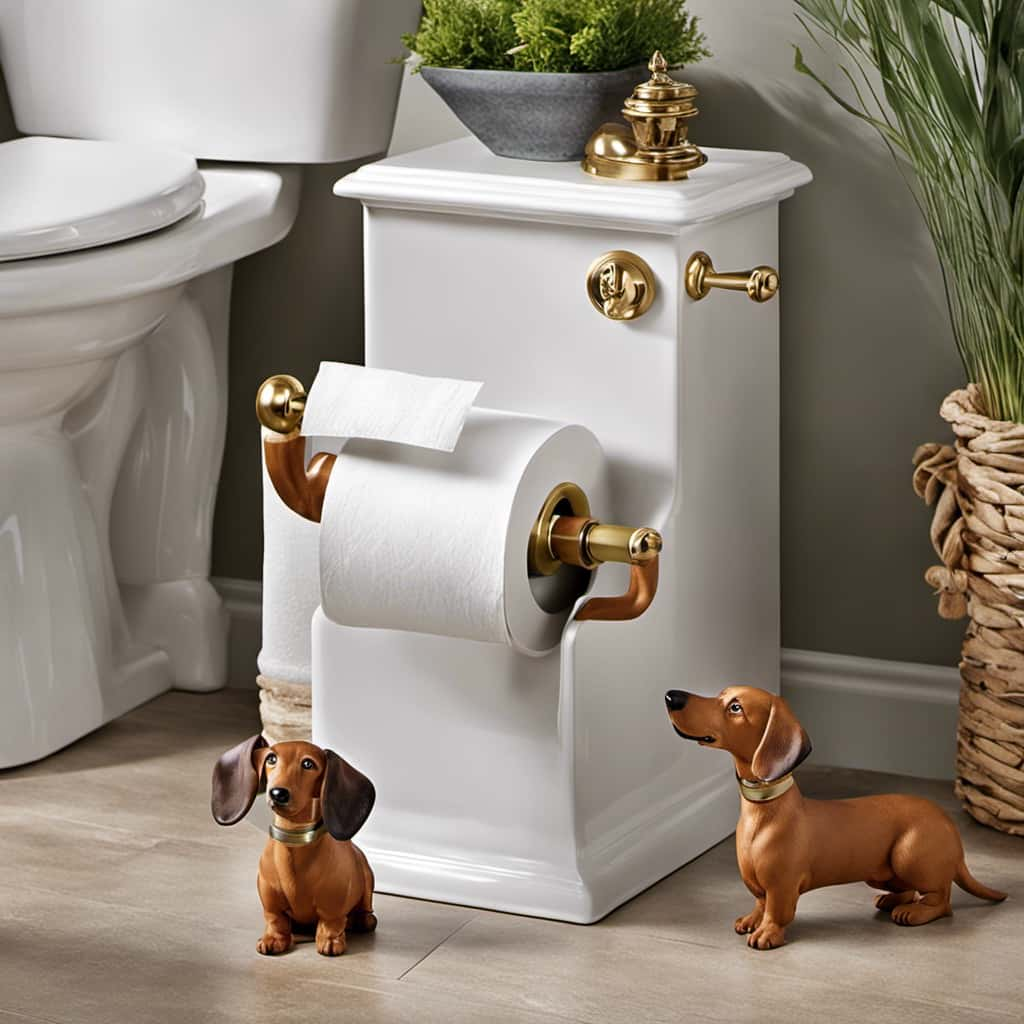
Additionally, flushing may not be a practical solution for larger infestations, as it may require multiple flushes or a significant amount of water.
Furthermore, flushing bed bugs doesn’t address the root cause of the infestation, such as untreated bedding or furniture.
Therefore, while flushing may temporarily reduce the number of bed bugs, it isn’t a comprehensive solution for long-term control and elimination.
Alternative Methods for Eliminating Bed Bugs
While flushing bed bugs down the toilet may not be an effective solution, there are alternative methods we can use to eliminate these pests. Here are five alternative methods for eliminating bed bugs:
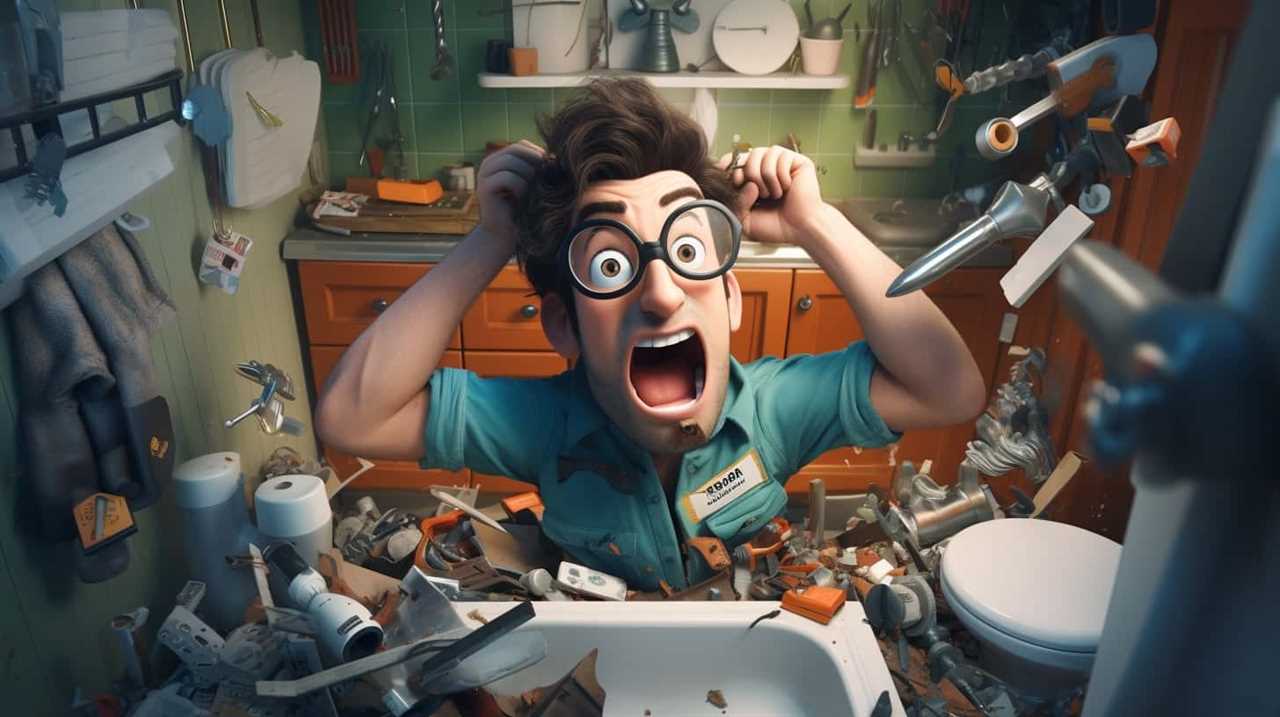
- Natural bed bug repellents: Certain essential oils, such as lavender, tea tree, and peppermint oil, have been found to repel bed bugs. These natural repellents can be used in sprays or diffusers to deter bed bugs from infesting your home.
- Heat treatment for bed bug control: Heat is an effective method for killing bed bugs and their eggs. Using specialized heaters or steamers, you can raise the temperature in infested areas to a level that’s lethal for bed bugs, ensuring complete elimination.
- Vacuuming: Regular vacuuming of infested areas can help remove bed bugs, eggs, and nymphs. Be sure to dispose of the vacuum bag or empty the canister in a sealed plastic bag to prevent reinfestation.
- Encasing mattresses and pillows: Bed bug-proof encasements can be used to trap any bed bugs already infesting your mattress or pillows, preventing them from feeding and eventually killing them.
- Professional pest control: If all else fails, it may be necessary to enlist the help of a professional pest control service. They have the knowledge, experience, and equipment to effectively eliminate bed bugs from your home.
These alternative methods provide effective solutions for eliminating bed bugs without resorting to ineffective methods like flushing them down the toilet.
Frequently Asked Questions
How Long Does It Take for Bed Bugs to Drown in Water?
Drowning bed bugs in water is not an effective method to eliminate an infestation. Bed bugs can survive for several hours in water and may even be able to reemerge after being submerged. There are alternative methods to eliminate bed bugs using water.
Can Bed Bugs Survive in the Plumbing System After Being Flushed Down the Toilet?
Bed bugs are unlikely to survive in the sewage system after being flushed down the toilet. They lack the ability to swim against the water flow and are unlikely to escape and infest the bathroom.
Are Bed Bugs More Likely to Spread to Other Areas of the House if Flushed Down the Toilet?
When flushed, bed bugs are unlikely to spread to other areas of the house. However, it is important to note that flushing them down the toilet is not a foolproof method. Potential risks include clogging, and prevention methods should focus on professional pest control.
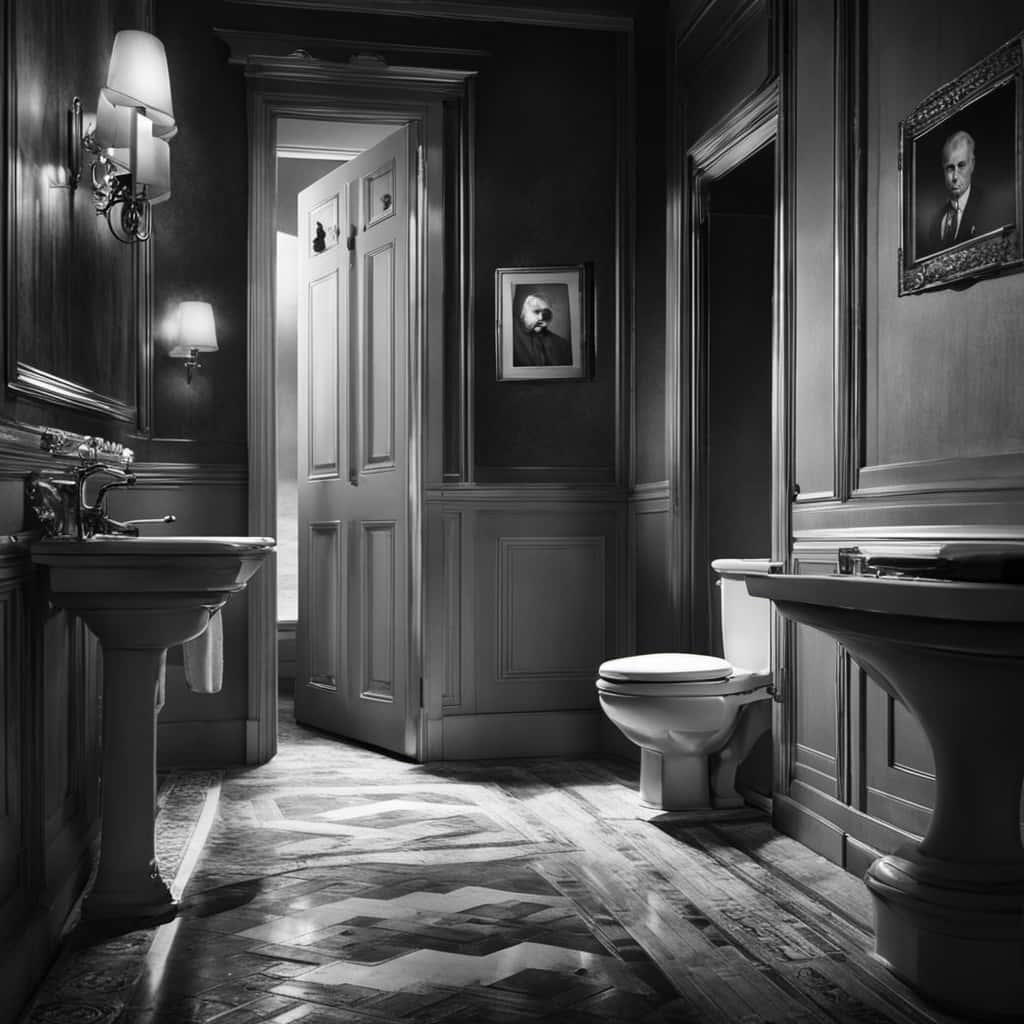
What Are the Potential Health Risks Associated With Flushing Bed Bugs?
Flushing bed bugs down the toilet may seem like an easy solution, but it may not be effective and can pose potential health risks. It’s important to consider other methods for eradication.
Are There Any Legal Restrictions or Regulations Regarding the Disposal of Bed Bugs by Flushing Them Down the Toilet?
There may be legal restrictions or regulations regarding the disposal of bed bugs by flushing them down the toilet. It is important to consider alternative disposal methods to prevent plumbing system survival and potential health risks.
Conclusion
In conclusion, while the idea of flushing bed bugs down the toilet may seem like a convenient solution, it isn’t a reliable method for eliminating these pests. Bed bugs have the ability to survive underwater for extended periods of time and can easily escape through the plumbing system.
Additionally, the potential risks associated with flushing bed bugs, such as clogging pipes and spreading infestations to other areas, outweigh any potential benefits.
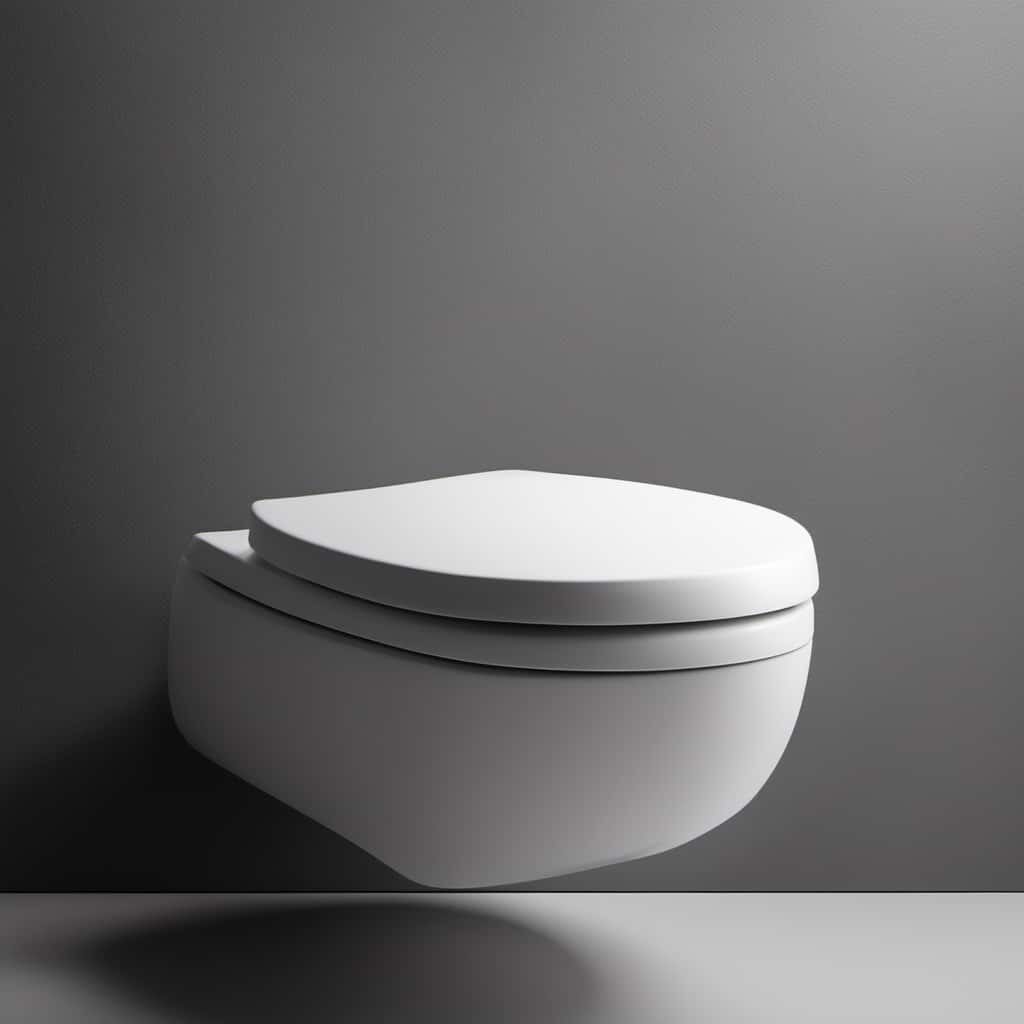
It’s recommended to explore alternative methods for effectively removing bed bugs from your environment.
With an impeccable eye for detail and a passion for bathroom-related, Ava leads our editorial team gracefully and precisely.
Under her guidance, Best Modern Toilet has flourished as the go-to resource for modern bathroom enthusiasts. In her free time, you might find Ava exploring antique shops and looking for vintage bathroom fixtures to add to her collection.
FAQ - Advanced Bathroom Queries
Is It Worth Getting a Dual Flush Toilet

Are you fed up with wasting water and money with your old toilet? Well, we have some exciting news for you. Presenting the dual flush toilet, a revolutionary addition to the world of bathroom fixtures.
With its innovative design, this toilet offers not one, but two flush options, allowing you to conserve water and save on your monthly bills.
In this article, we’ll delve into the benefits, cost savings, ease of use, environmental impact, and maintenance considerations of this modern marvel.
So, sit back, relax, and let’s explore if it’s worth getting a dual flush toilet.

Key Takeaways
- Dual flush toilets offer water conservation benefits, using an average of 1.28 gallons of water per flush compared to traditional toilets.
- They provide cost savings and sustainability by reducing water consumption and lowering water bills over time.
- Dual flush toilets are user-friendly and efficient, allowing easy selection between low-flush and high-flush modes.
- They have a positive environmental impact, helping to conserve water and reduce carbon emissions associated with water treatment and transportation.
Water Conservation Benefits
Dual flush toilets offer significant water conservation benefits. These toilets are designed to provide users with the option of using a lower volume flush for liquid waste and a higher volume flush for solid waste. This water efficiency feature allows for a reduction in water usage, making dual flush toilets a sustainable choice for households and businesses alike.
By using less water for flushing, these toilets help conserve water resources and contribute to sustainable practices. The average dual flush toilet uses around 1.28 gallons of water per flush, compared to traditional toilets that use 1.6 to 3.5 gallons per flush. This reduction in water usage can lead to substantial savings in water bills and contribute to a more eco-friendly lifestyle.
Additionally, the use of dual flush toilets promotes awareness and responsible water consumption, making them a worthy investment for those who are committed to water conservation and sustainable living.
Cost Savings
Are there any financial benefits to installing a dual flush toilet? Absolutely. While the upfront cost of a dual flush toilet may be higher than a traditional toilet, it proves to be a wise long-term investment. Here are three reasons why:

- Water bill reduction: Dual flush toilets give you the option to choose between a low-flush and a high-flush mode, depending on your needs. By using the low-flush mode for liquid waste and the high-flush mode for solid waste, you can significantly reduce your water consumption. This translates to lower water bills over time.
- Environmental savings: By conserving water with a dual flush toilet, you also contribute to water conservation efforts and reduce your carbon footprint. This aligns with the growing demand for sustainable practices and eco-friendly solutions.
- Potential rebates and incentives: In some areas, installing a dual flush toilet may qualify you for rebates or incentives from local utilities or government programs. These financial incentives can help offset the initial cost of the toilet and provide additional savings.
Considering the long-term financial benefits, reduced water bills, environmental impact, and potential incentives, investing in a dual flush toilet is a smart choice for those seeking both cost savings and sustainability.
Ease of Use
Using a dual flush toilet is convenient for us because it allows for easy selection between the low-flush and high-flush modes. This functionality enables us to choose the appropriate flush based on our needs, promoting efficiency in water usage. The ease of use is further enhanced by the intuitive design and user-friendly controls. With just a simple push or pull of a lever, we can select the desired flush mode without any hassle. To illustrate this convenience, we have created a table below:
| Features | Low-Flush Mode | High-Flush Mode |
|---|---|---|
| Water Usage (Gallons) | 0.8-1.1 | 1.6-1.8 |
| Suitable for | Liquid waste, light waste | Solid waste, heavy waste |
As we can see, the dual flush toilet offers a versatile and efficient solution for waste disposal. Its ease of use makes it a practical and worthwhile choice for those seeking a sustainable and user-friendly bathroom fixture.
Environmental Impact
After examining the ease of use of a dual flush toilet, we now turn our attention to its environmental impact. A dual flush toilet can have a significant positive effect on the environment. Here are three key reasons why:

- Water Scarcity: Dual flush toilets are designed to use less water compared to traditional toilets. The option to choose between a full flush for solid waste and a half flush for liquid waste helps conserve water. In areas facing water scarcity, this can make a substantial difference in water usage and conservation efforts.
- Reduced Carbon Footprint: Traditional toilets use more water per flush, which means more energy is required to treat and transport that water. By reducing water usage, dual flush toilets also reduce the carbon emissions associated with water treatment and transportation, thus contributing to a smaller carbon footprint.
- Sustainable Solution: With the increasing awareness of sustainability, dual flush toilets provide an eco-friendly alternative to traditional toilets. Their water-saving capabilities and reduced carbon footprint align with the goals of environmental conservation and responsible resource management.
Maintenance Considerations
Moving on to maintenance considerations, one important aspect to consider when owning a dual flush toilet is its durability. These toilets are designed to be efficient and long-lasting, but regular maintenance is still necessary to ensure their optimal performance.
One of the most important maintenance tips is to regularly clean the toilet bowl and tank to prevent the build-up of mineral deposits and bacteria. This can be done using a mild cleaning solution and a soft brush.
Another potential issue to be aware of is the possibility of leakage. It’s important to check the toilet regularly for any signs of leaks, such as water pooling around the base or continuous running of the flush. If any issues are identified, it’s recommended to contact a professional plumber to address the problem promptly.
Frequently Asked Questions
How Long Does It Take to Install a Dual Flush Toilet?
When considering the installation time of a dual flush toilet, it’s important to note that it varies depending on factors such as the existing plumbing system. Additionally, comparing the cost to traditional toilets can help determine if it’s worth the investment.
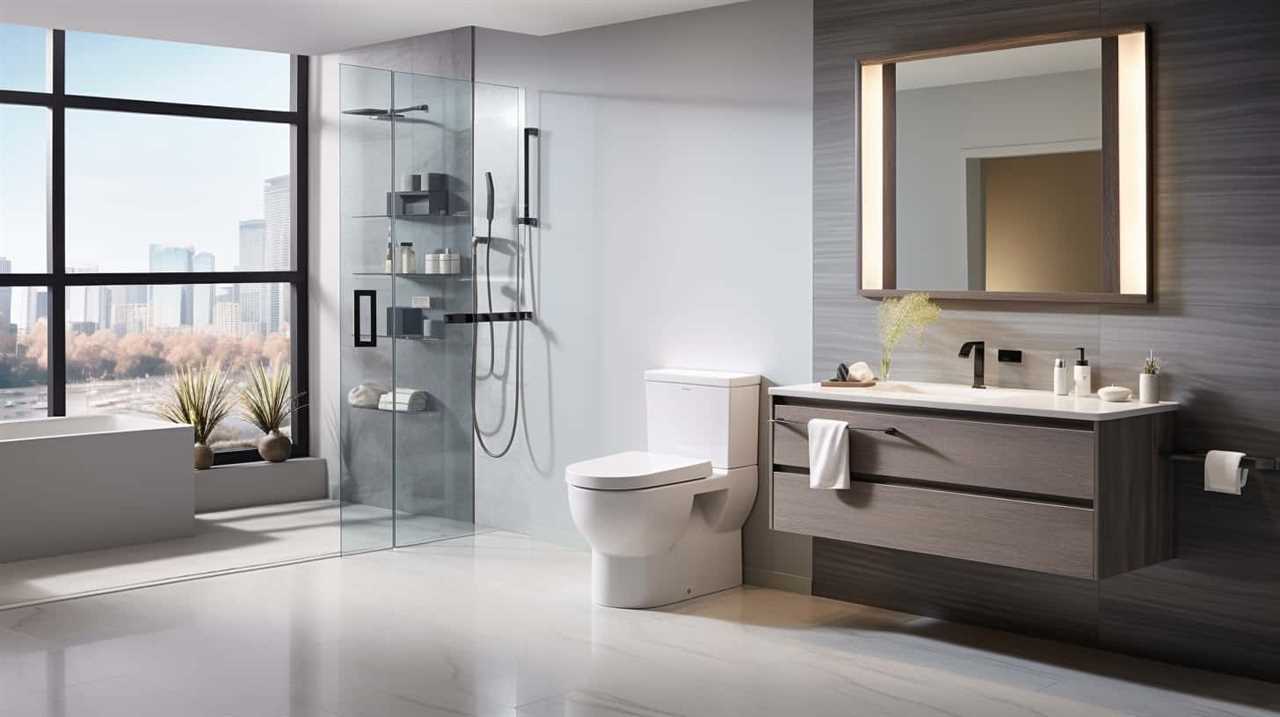
Are Dual Flush Toilets Suitable for All Types of Bathrooms?
When considering the suitability of dual flush toilets for all types of bathrooms, it is important to take into account space limitations and design considerations. These factors play a crucial role in determining the feasibility of installing a dual flush toilet.
Can I Retrofit My Existing Toilet to a Dual Flush System?
Yes, we can retrofit our existing toilet to a dual flush system. It may seem costly at first, but the benefits of water conservation and long-term savings outweigh the initial investment.
Are There Any Specific Plumbing Requirements for Installing a Dual Flush Toilet?
Plumbing considerations for installing a dual flush toilet can vary depending on your existing plumbing setup. It’s important to consult a professional to ensure proper installation and to determine the timeframe required.
Are There Any Health Benefits Associated With Using a Dual Flush Toilet?
Using a dual flush toilet can greatly contribute to water conservation and reduce our environmental impact. While the health benefits may not be significant, the positive impact on our planet is worth considering.

Conclusion
After analyzing the benefits and considerations of getting a dual flush toilet, it’s clear that it’s worth the investment.
Not only does it contribute to water conservation and cost savings, but it also offers convenience and has a positive environmental impact.
With its efficient flushing system, the dual flush toilet ensures an effortless experience while reducing water wastage.
Just like a gentle rain shower, it gently saves water without compromising on functionality.
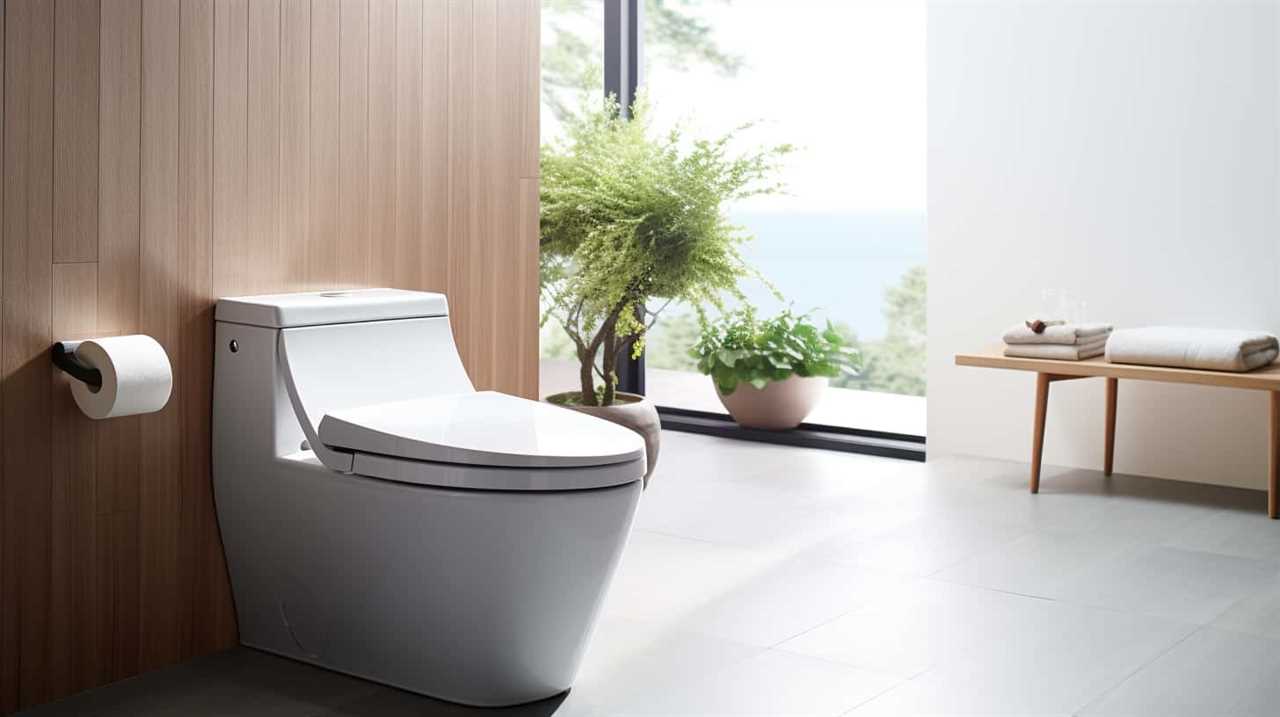
With an impeccable eye for detail and a passion for bathroom-related, Ava leads our editorial team gracefully and precisely.
Under her guidance, Best Modern Toilet has flourished as the go-to resource for modern bathroom enthusiasts. In her free time, you might find Ava exploring antique shops and looking for vintage bathroom fixtures to add to her collection.
FAQ - Advanced Bathroom Queries
What Happens if You Take a Shower While the Water Softener Is Running
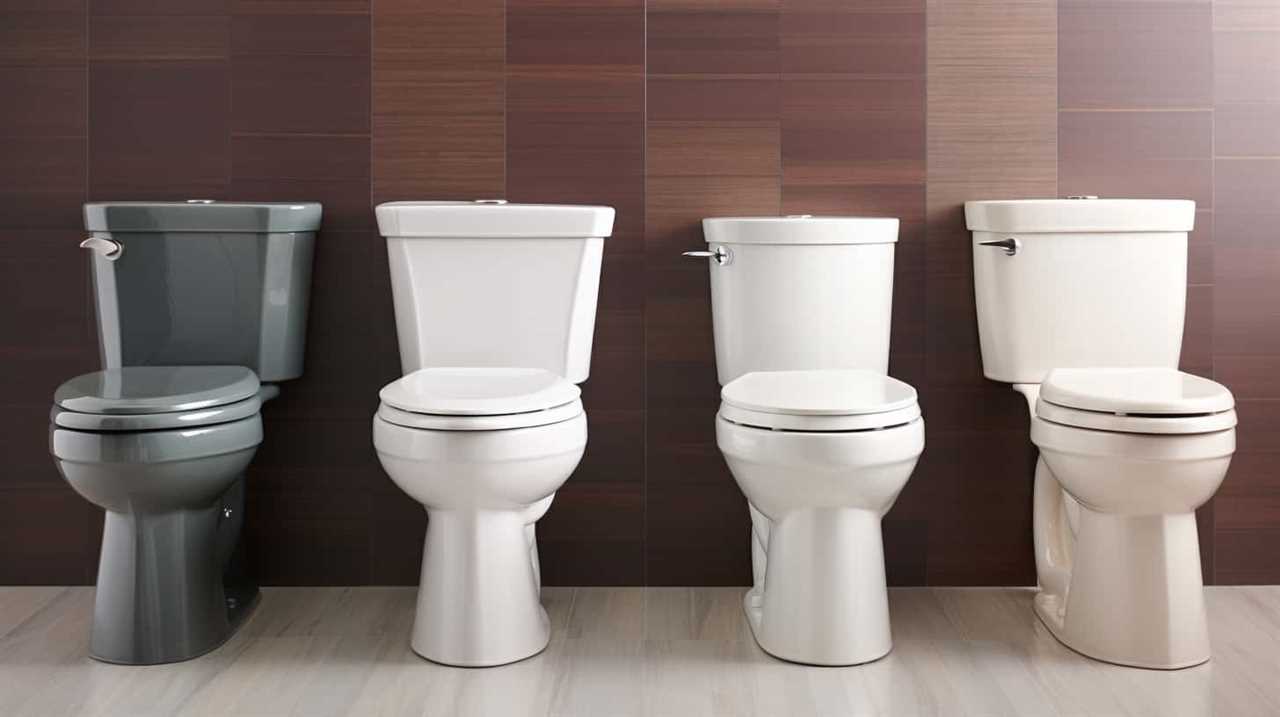
Picture yourself standing beneath a waterfall, its flowing waters bringing a sense of calm and rejuvenation. Now, envision showering with a water softener in use. Just like a symphony of nature, the water gently caresses your skin, leaving it feeling silky smooth.
But what truly happens when the water softener is in action? In this article, we will delve into the potential effects on your skin, hair, soap performance, plumbing, and considerations for sensitive skin.
Let us uncover the mysteries of this shower-time enigma.
Key Takeaways
- Softened water improves skin health by promoting moisture retention, maintaining pH balance, and nourishing the skin for a smoother complexion.
- Softened water prevents mineral buildup on hair, reducing damage, dryness, and dullness, making it easier to comb, style, and manage.
- Soft water allows soap and shampoo to lather and clean more effectively, enhancing the performance of these products and providing a more satisfying shower experience.
- Running the water softener while showering can cause a drop in water pressure, lead to sediment buildup in the water heater, stress plumbing fixtures, and reduce the lifespan of the system, requiring precautions for the longevity and efficiency of the plumbing system.
Potential Effects on Skin
Taking a shower while the water softener is running can significantly improve our skin’s health and appearance. The softened water has a positive impact on our skin by promoting moisture retention and maintaining the proper pH balance.

Softened water has lower mineral content, which allows it to better penetrate the skin and hydrate it effectively. This helps to keep our skin nourished and moisturized, leading to a smoother and healthier complexion.
Additionally, the balanced pH level of softened water helps to restore the natural acidity of our skin, which plays a crucial role in protecting it from bacteria and irritants. These combined benefits contribute to improved skin health and a more radiant appearance.
Now, let’s explore how the water softener’s operation can impact our hair health.
Impact on Hair Health
Softened water not only benefits our skin, but it also has a positive impact on our hair health. When we shower with water from a water softener, we can experience the following benefits:
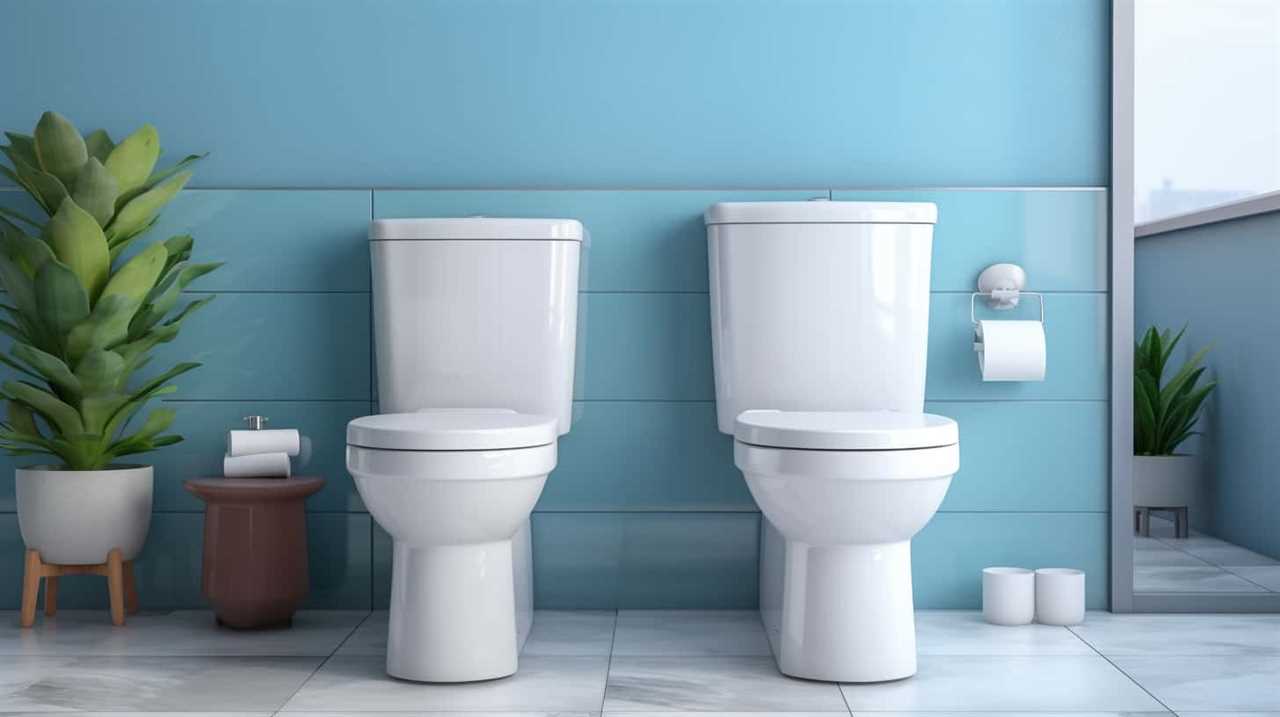
- Reduced hair damage: Softened water helps to prevent the buildup of minerals and chemicals on our hair, which can lead to dryness, breakage, and dullness.
- Increased manageability: With softened water, our hair becomes easier to comb and style. It becomes smoother, shinier, and more manageable overall.
- Enhanced moisture retention: Soft water allows our hair to better absorb and retain moisture, leaving it hydrated and less prone to dryness and frizz.
- Longer-lasting color: Water softeners can help preserve the vibrancy of color-treated hair by preventing the minerals in hard water from stripping away the color.
By following these hair care tips and using water softened by a water softener, we can maintain healthier and more beautiful hair.
As we move forward, let’s explore the effects of softened water on soap and shampoo performance.
Effects on Soap and Shampoo Performance
We noticed a remarkable improvement in how our soap and shampoo performed when using water softened by a water softener. This is because hard water, which contains high levels of minerals such as calcium and magnesium, can interfere with the effectiveness of soaps and shampoos. When hard water is used, it forms a film on the skin and hair, making it difficult for soap and shampoo to lather and clean properly.
Soft water, on the other hand, doesn’t contain these minerals and allows soap and shampoo to work more effectively. The benefits of water softeners in enhancing soap and shampoo performance include increased lathering, improved cleaning ability, and better rinsing. With soft water, you can enjoy a more satisfying and effective shower experience.
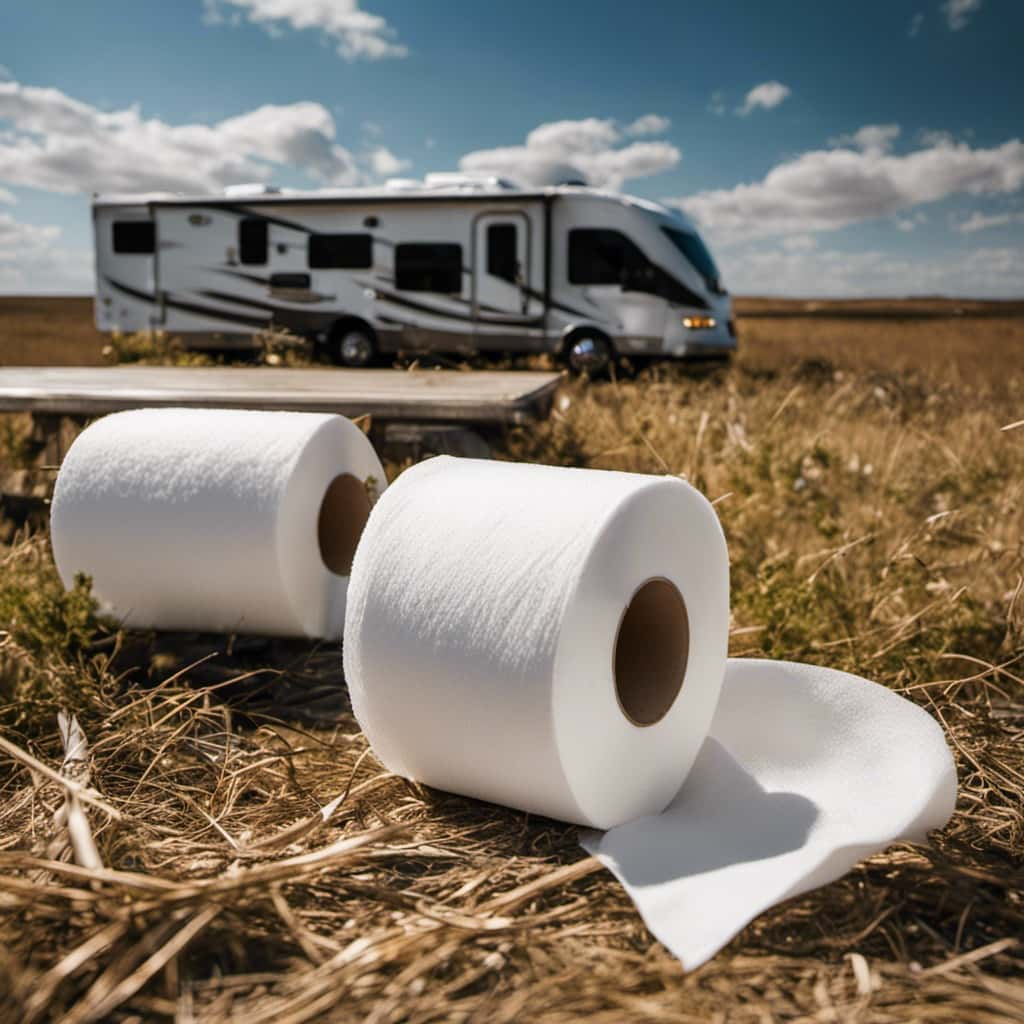
Moving on to potential plumbing issues…
Potential Plumbing Issues
To avoid any potential plumbing issues, it’s important to ensure that the water softener isn’t running while taking a shower. Here are some reasons why:
- Potential water pressure problems: Running the water softener while taking a shower can cause a drop in water pressure. This can result in a weak and unsatisfying shower experience.
- Impact on water heater efficiency: The water softener adds salt to the water to remove minerals, which can lead to a buildup of sediment in the water heater. This sediment can reduce the efficiency of the water heater and increase energy consumption.
- Increased wear and tear on plumbing fixtures: The constant flow of soft water can put additional stress on plumbing fixtures, such as faucets and showerheads. This can lead to leaks and other plumbing problems over time.
- Potential damage to the water softener: Running the water softener while taking a shower can put unnecessary strain on the system, potentially causing damage and reducing its lifespan.
Considering these potential plumbing issues, it’s crucial to take precautions when using the water softener to ensure the longevity and efficiency of your plumbing system.
Now, let’s move on to the next section where we’ll discuss considerations for sensitive skin.
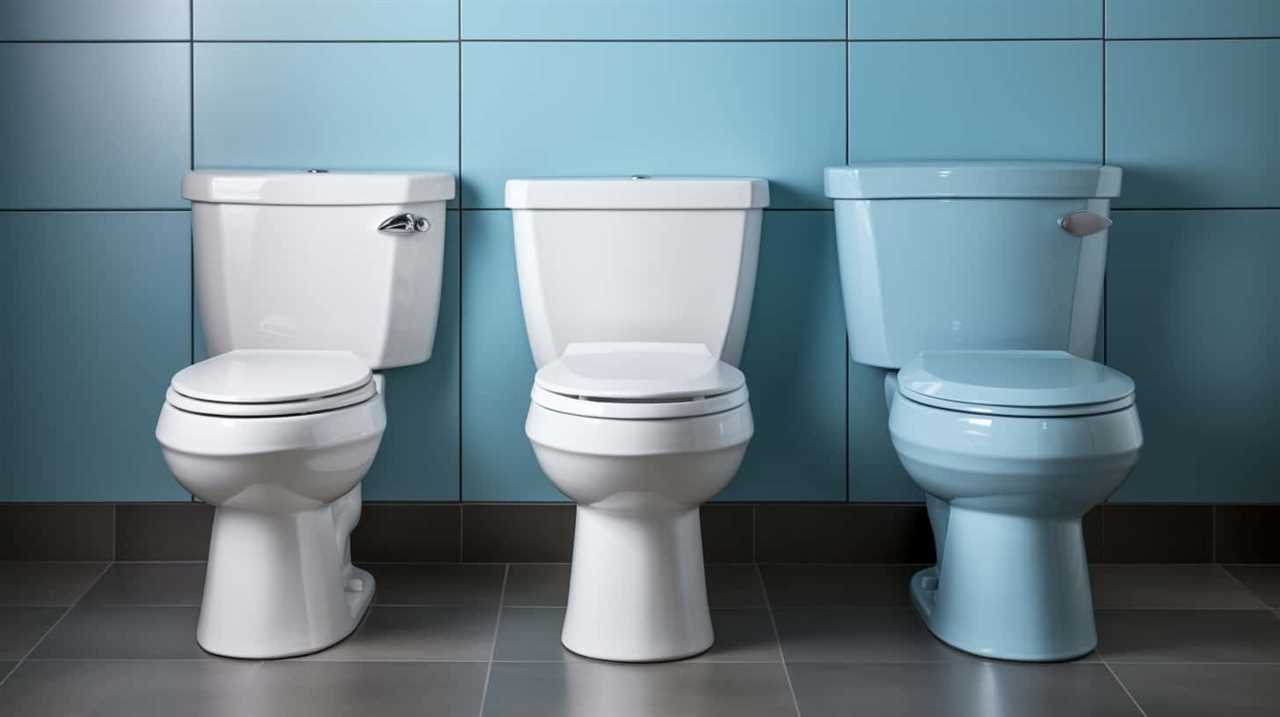
Considerations for Sensitive Skin
Our sensitive skin’s needs should be taken into account when using a water softener. Sensitive skin requires special care to prevent irritation and dryness. When using a water softener, it’s important to pay attention to the shower temperature as it can have a significant impact on the skin.
Hot water can strip the skin of its natural oils, leading to dryness and irritation. It’s recommended to use lukewarm water instead, as it’s gentler on sensitive skin. Additionally, it’s advisable to limit the duration of showers to avoid prolonged exposure to water and potential skin damage.
Frequently Asked Questions
Can Showering With the Water Softener Running Cause Any Damage to My Plumbing System?
Showering with the water softener running can potentially affect water pressure and reduce water heater efficiency. It’s important to be mindful of these potential effects to ensure proper functioning of your plumbing system.
Will Using Soap and Shampoo Be Less Effective if I Shower With the Water Softener Running?
Using a water softener while showering may reduce water pressure but won’t affect the effectiveness of soap and shampoo. However, consider the environmental implications of running the water softener during showers.
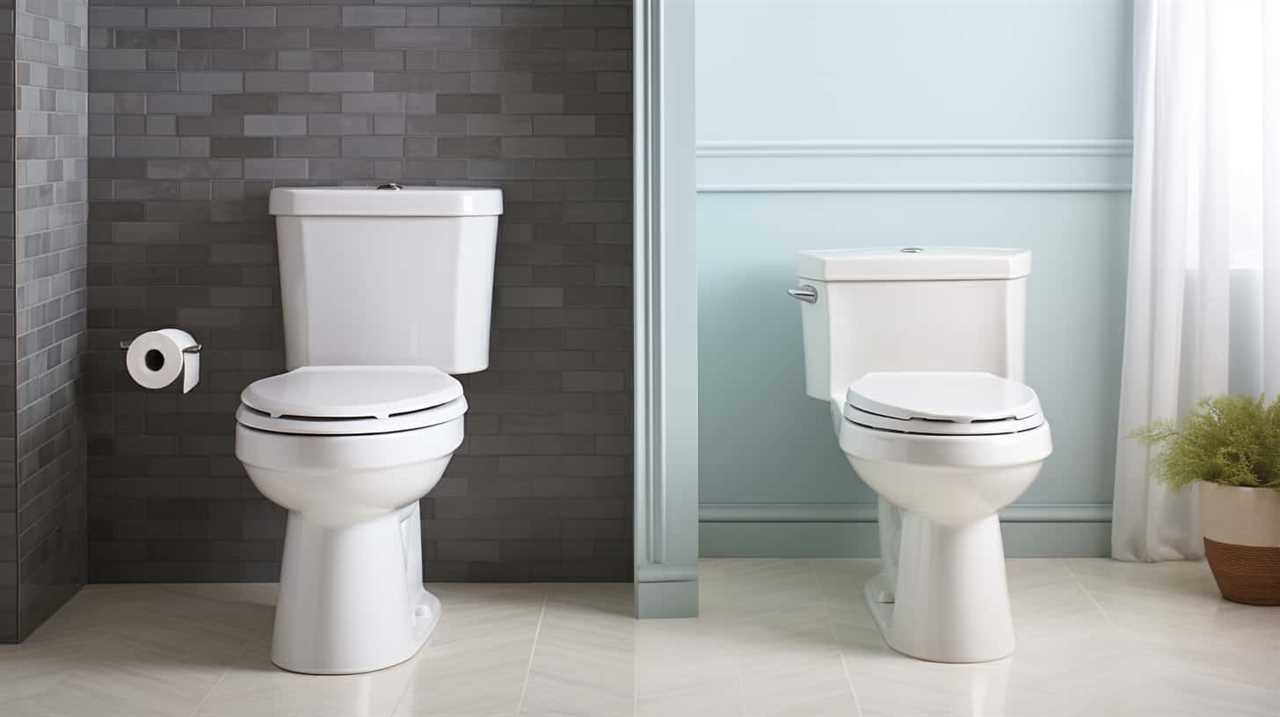
What Are the Potential Effects of Showering With the Water Softener Running on My Sensitive Skin?
Showering with the water softener running may have adverse effects on our sensitive skin. The softened water can strip away natural oils, leading to dryness and irritation. It may also impact the effectiveness of soap and shampoo on our hair.
Can Showering With the Water Softener Running Lead to Any Hair-Related Problems, Such as Dryness or Brittleness?
Showering with the water softener running won’t cause hair dryness or brittleness. However, it’s important to regularly maintain the water softener for optimal hair care.
Are There Any Specific Plumbing Issues That May Arise From Using a Water Softener While Taking a Shower?
Taking a shower while the water softener is running can potentially impact the plumbing system. It may lead to increased maintenance requirements due to the additional strain on the system from the continuous flow of water.
Conclusion
In conclusion, taking a shower while the water softener is running can have various effects on your skin, hair, and overall shower experience.
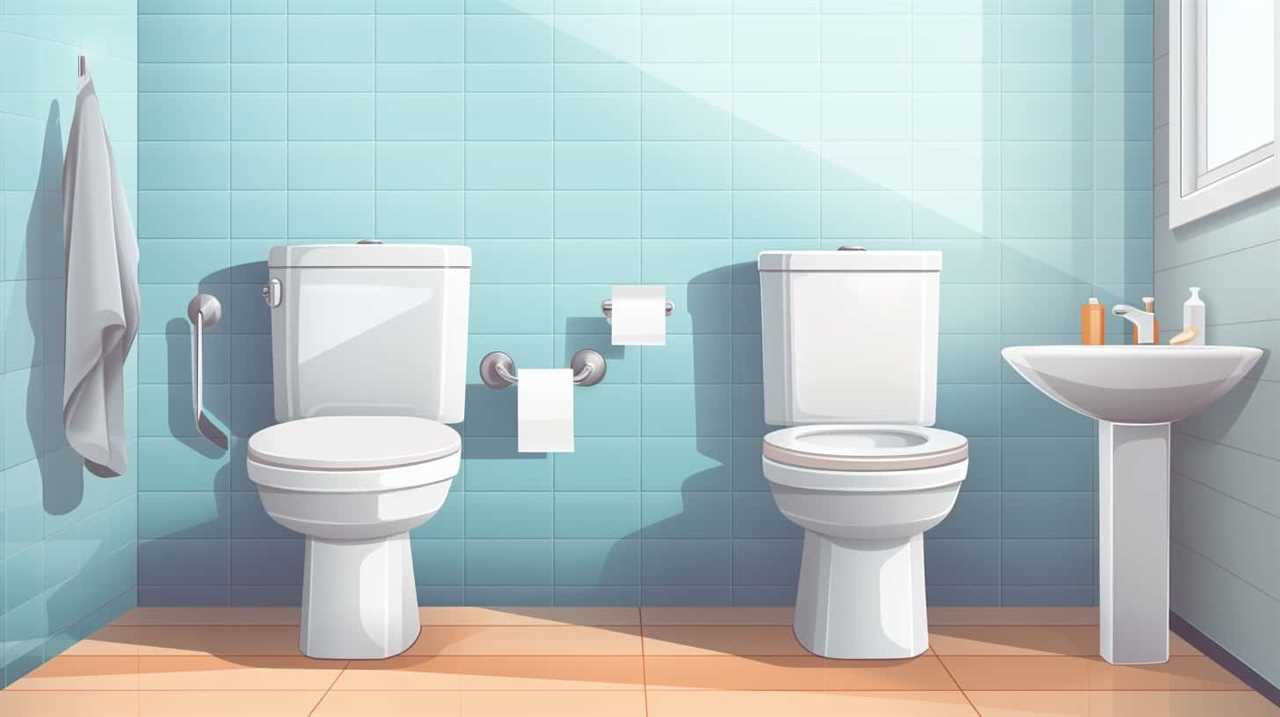
It may leave your skin feeling smoother and your hair healthier.
Soap and shampoo may lather better, giving you a more satisfying clean.
However, it’s important to consider potential plumbing issues that may arise.
If you have sensitive skin, it’s crucial to take extra precautions and consult a professional.
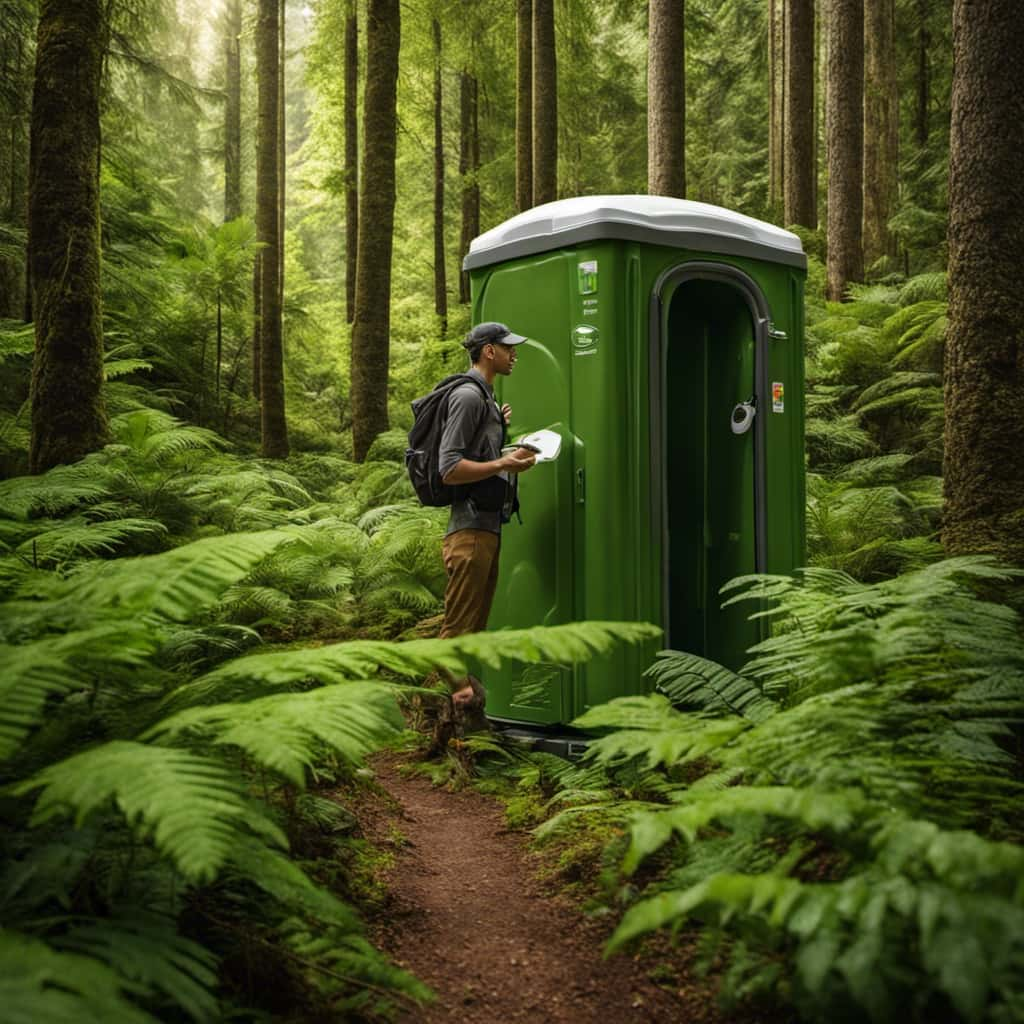
So, before hopping into the shower, make sure the water softener is set just right for a truly refreshing experience.
With an impeccable eye for detail and a passion for bathroom-related, Ava leads our editorial team gracefully and precisely.
Under her guidance, Best Modern Toilet has flourished as the go-to resource for modern bathroom enthusiasts. In her free time, you might find Ava exploring antique shops and looking for vintage bathroom fixtures to add to her collection.
-

 FAQ - Advanced Bathroom Queries3 months ago
FAQ - Advanced Bathroom Queries3 months agoWhat Happens if You Sit on the Toilet Too Long
-

 FAQ - Advanced Bathroom Queries3 months ago
FAQ - Advanced Bathroom Queries3 months agoWhy Is My Toilet so Loud When Refilling
-

 Guides3 months ago
Guides3 months agoTroubleshooting Dropping Water Level in Toilet Bowl: Causes and Solutions
-

 Toilet Brands3 months ago
Toilet Brands3 months agoCountries Where You Can’t Flush Toilet Paper
-

 Guides3 months ago
Guides3 months agoChoosing the Right Toilet Flange: A Comprehensive Guide
-

 Guides3 months ago
Guides3 months agoToilet Water Supply Line Sizes: Finding the Right Fit
-

 FAQ - Advanced Bathroom Queries3 months ago
FAQ - Advanced Bathroom Queries3 months agoWhat Happens When You Put Baking Soda in Your Toilet
-

 Guides3 months ago
Guides3 months agoHow to Remove Crystallized Urine From Toilet Bowl





















